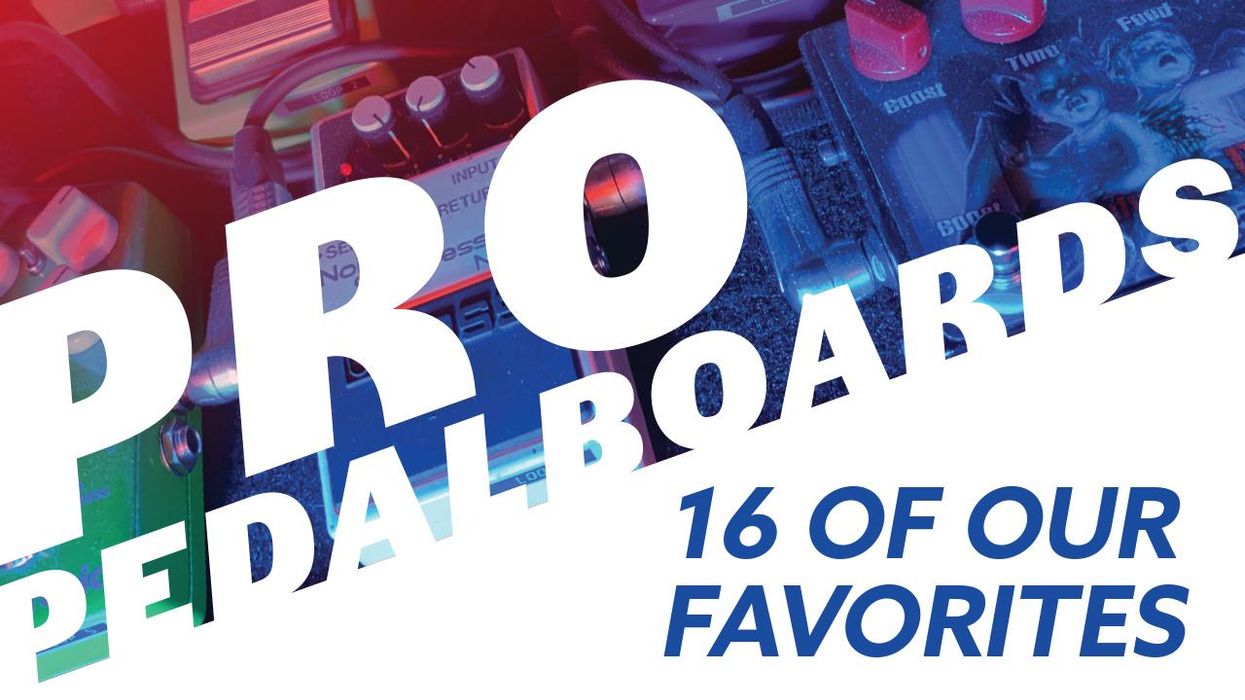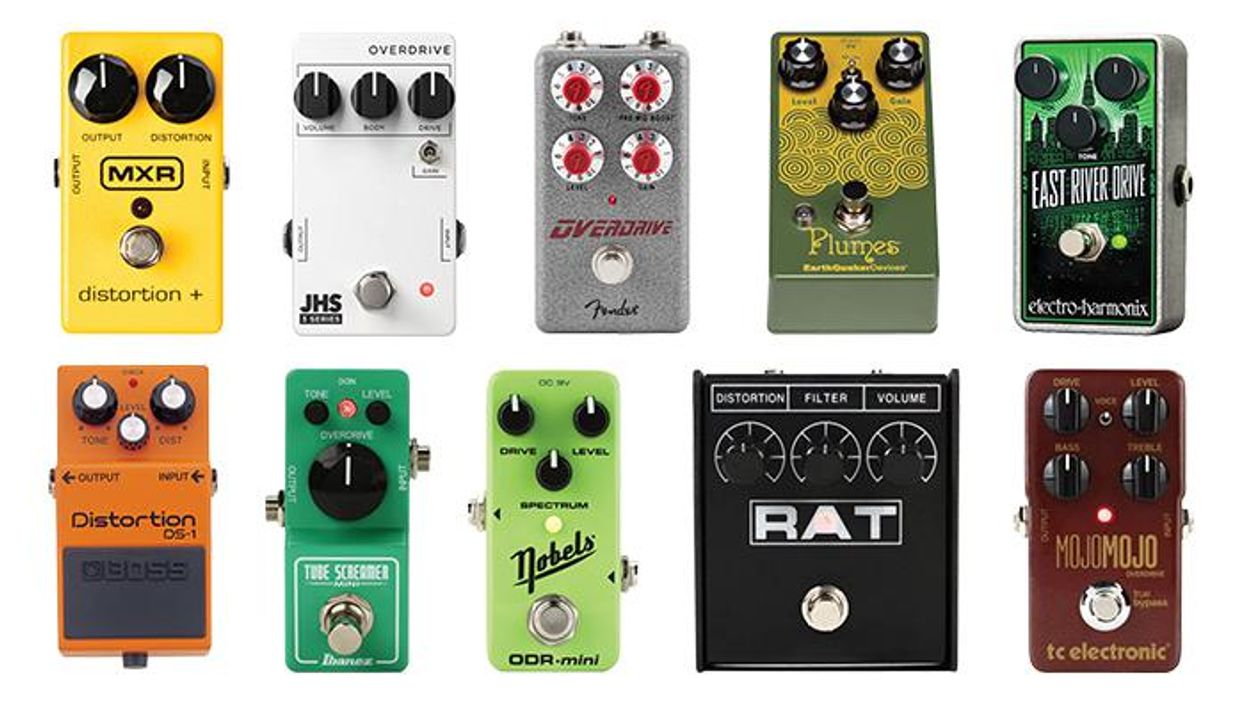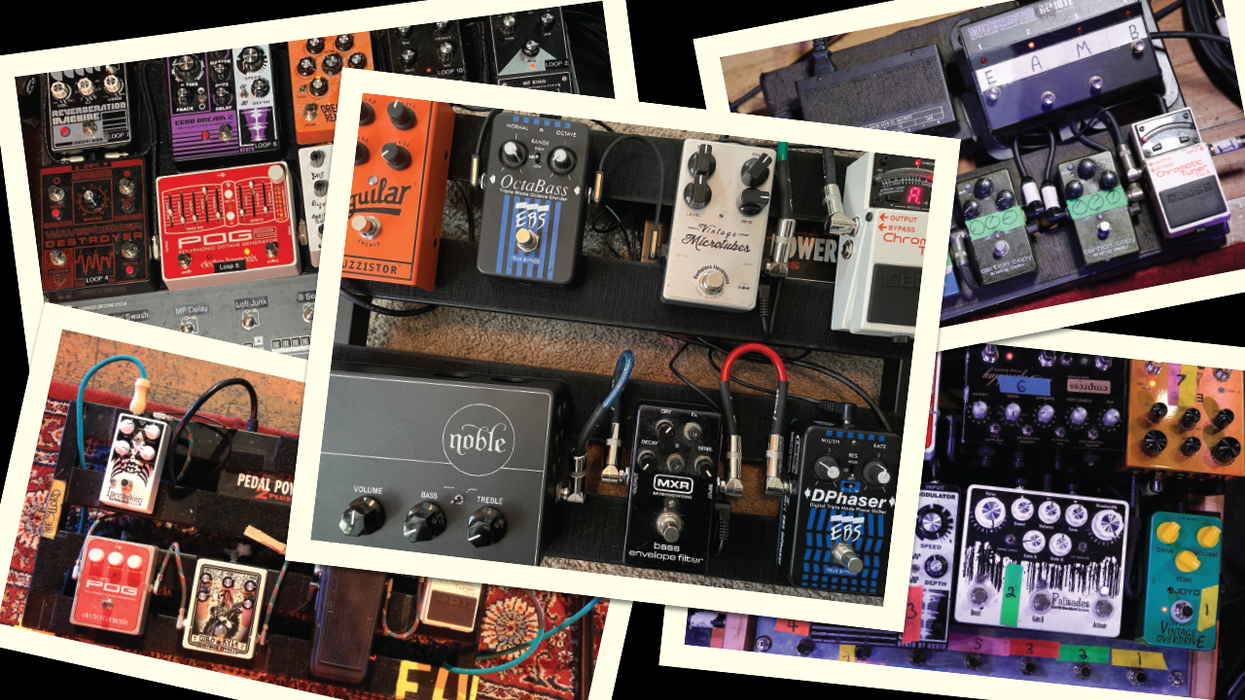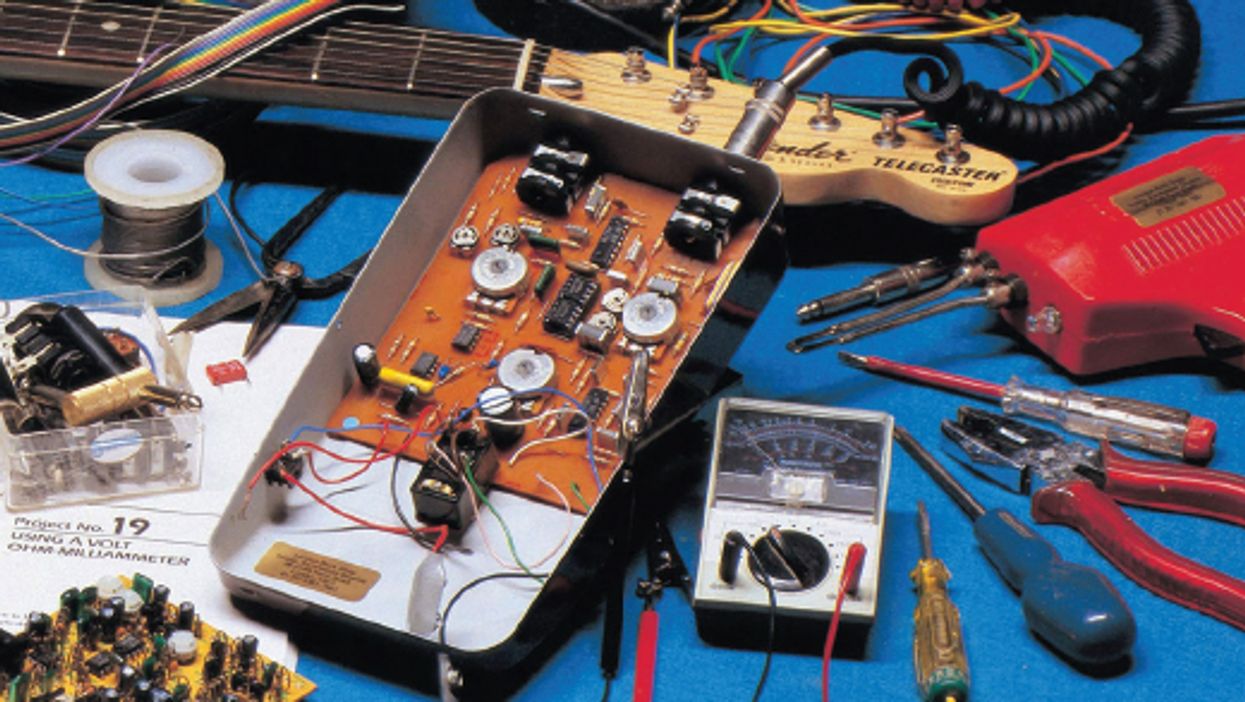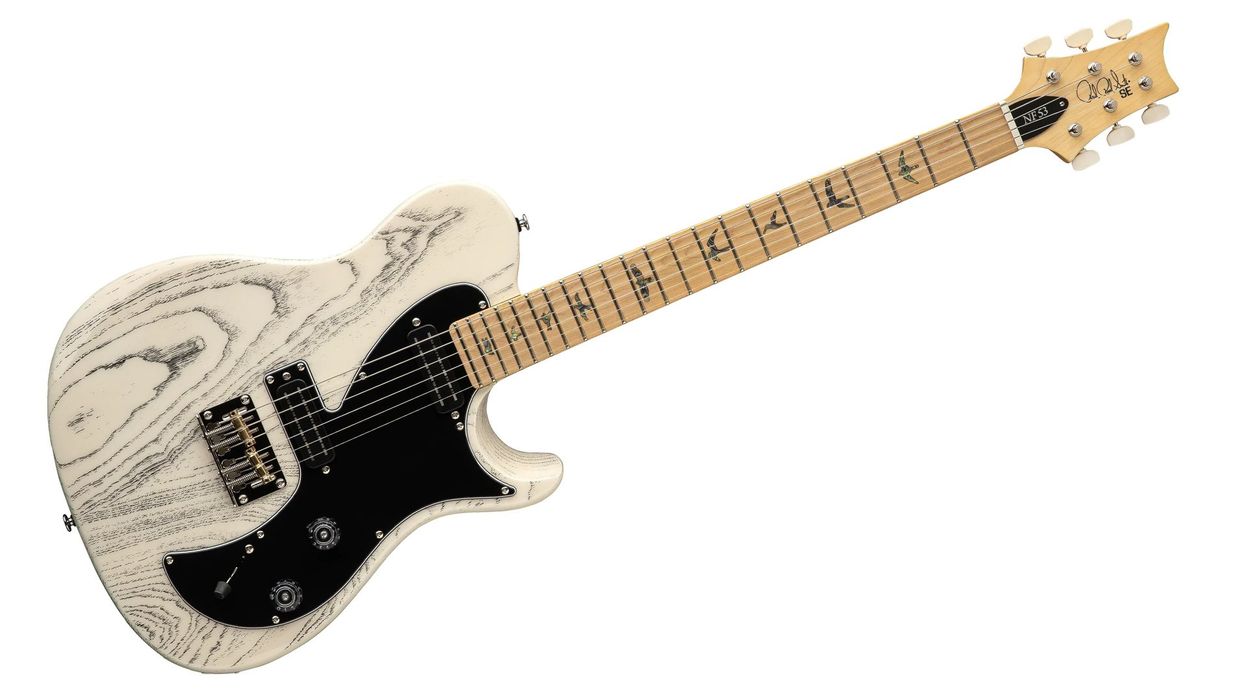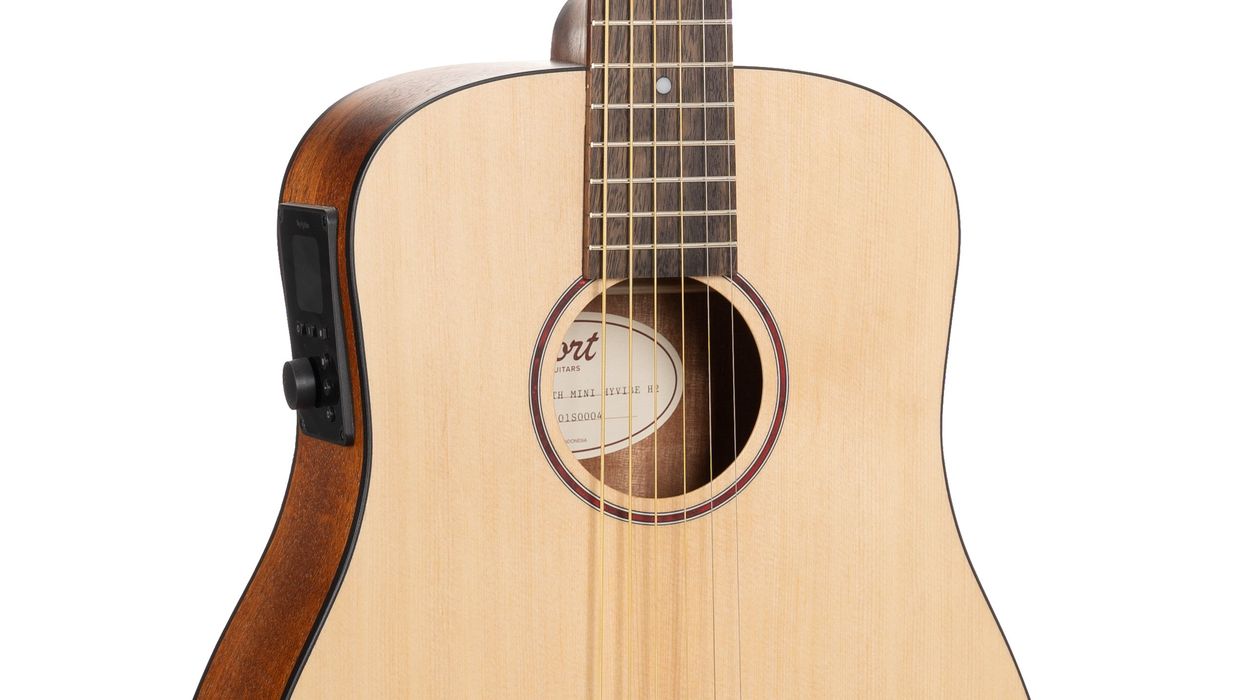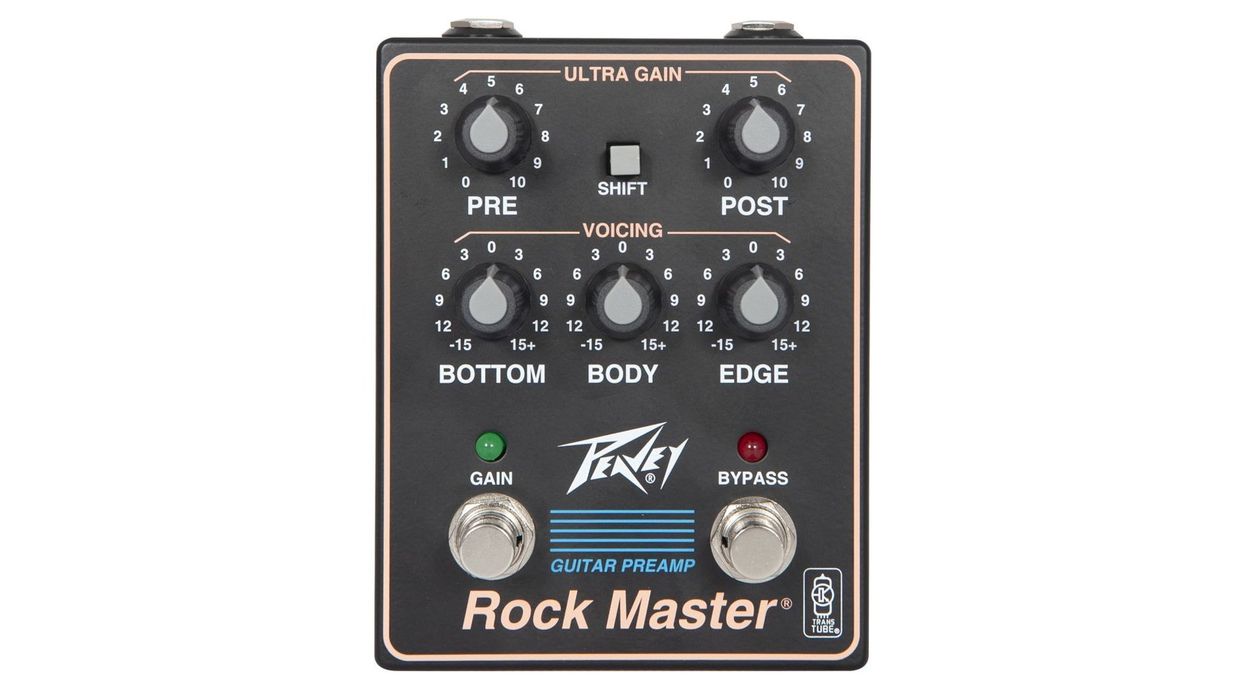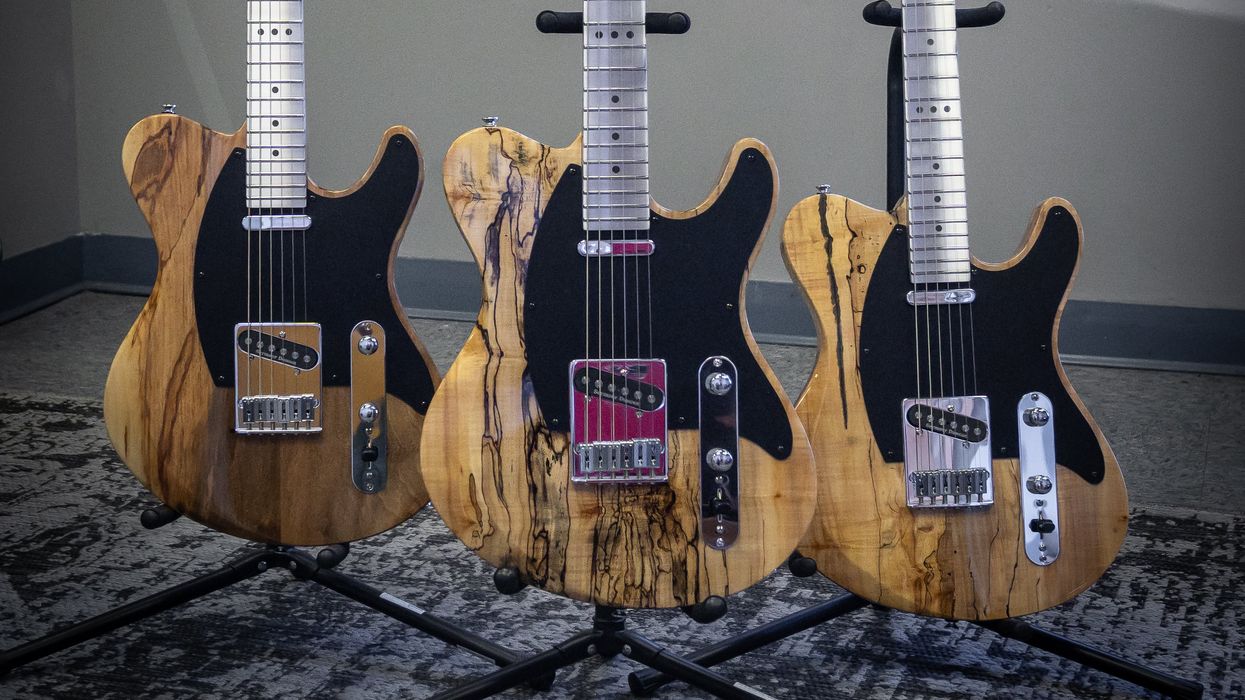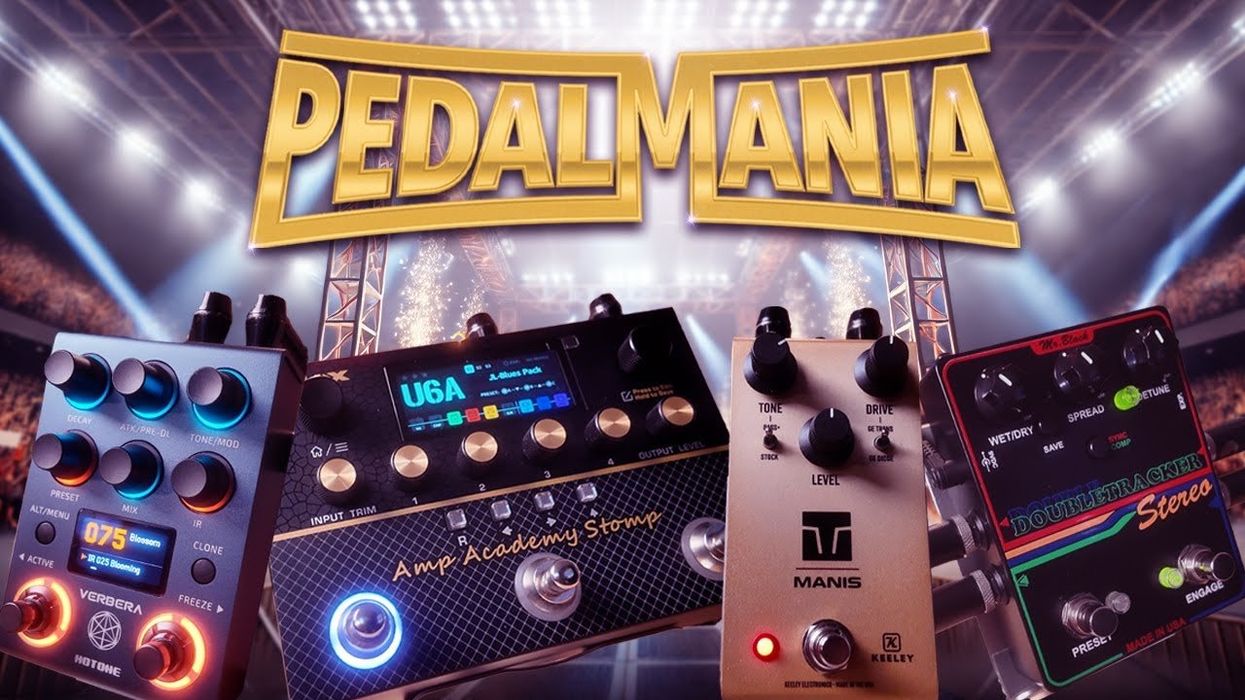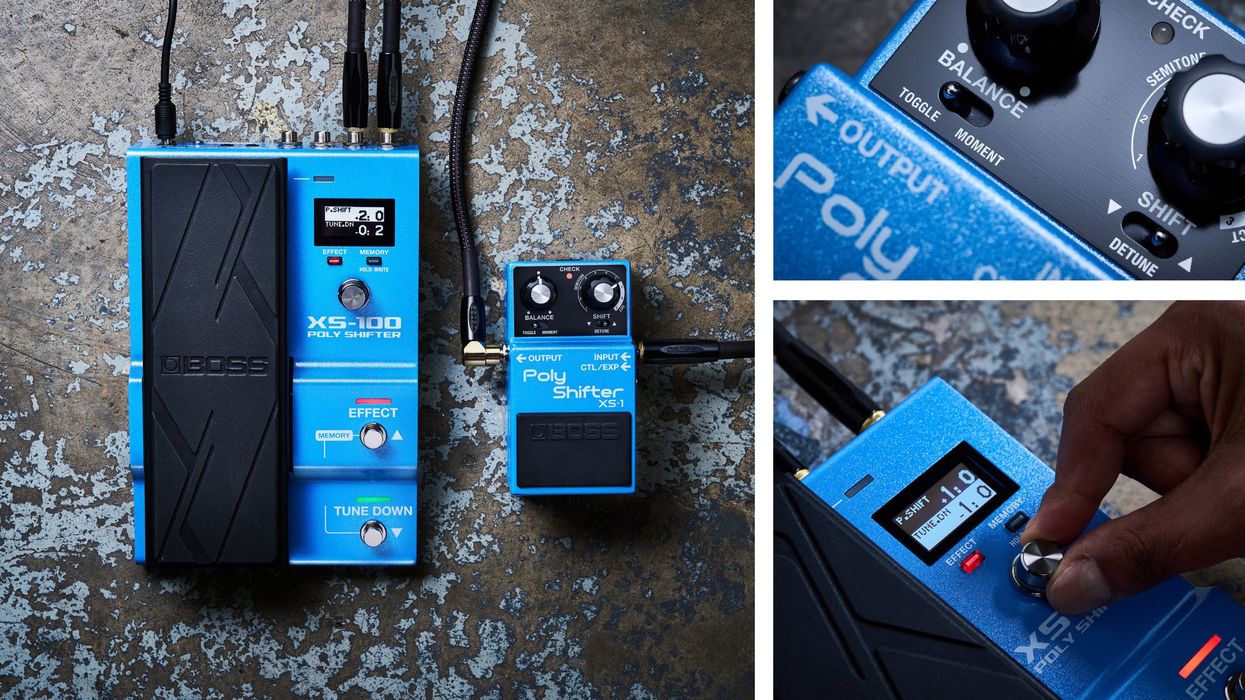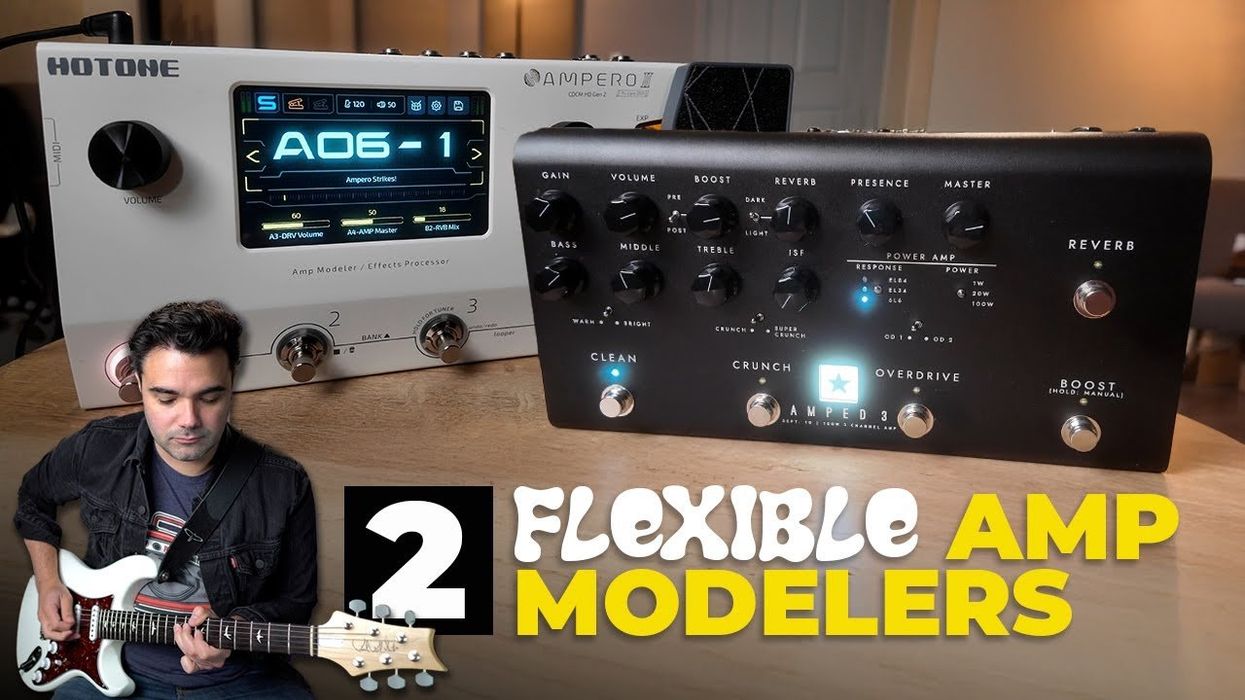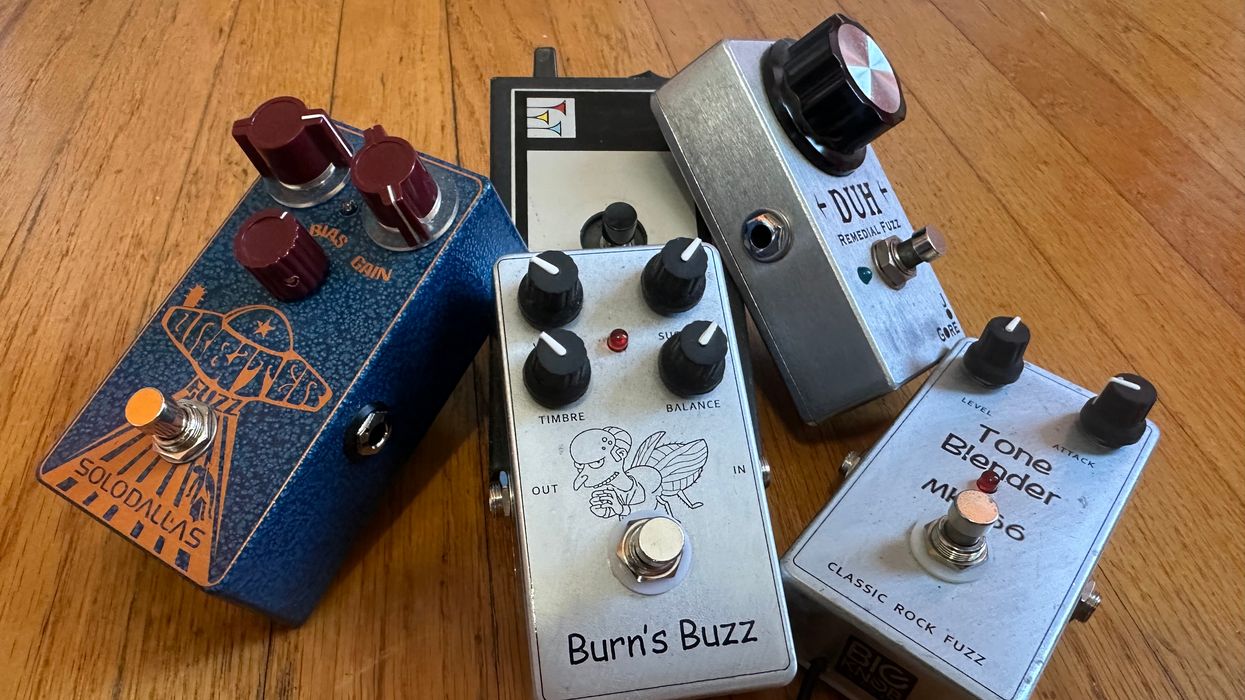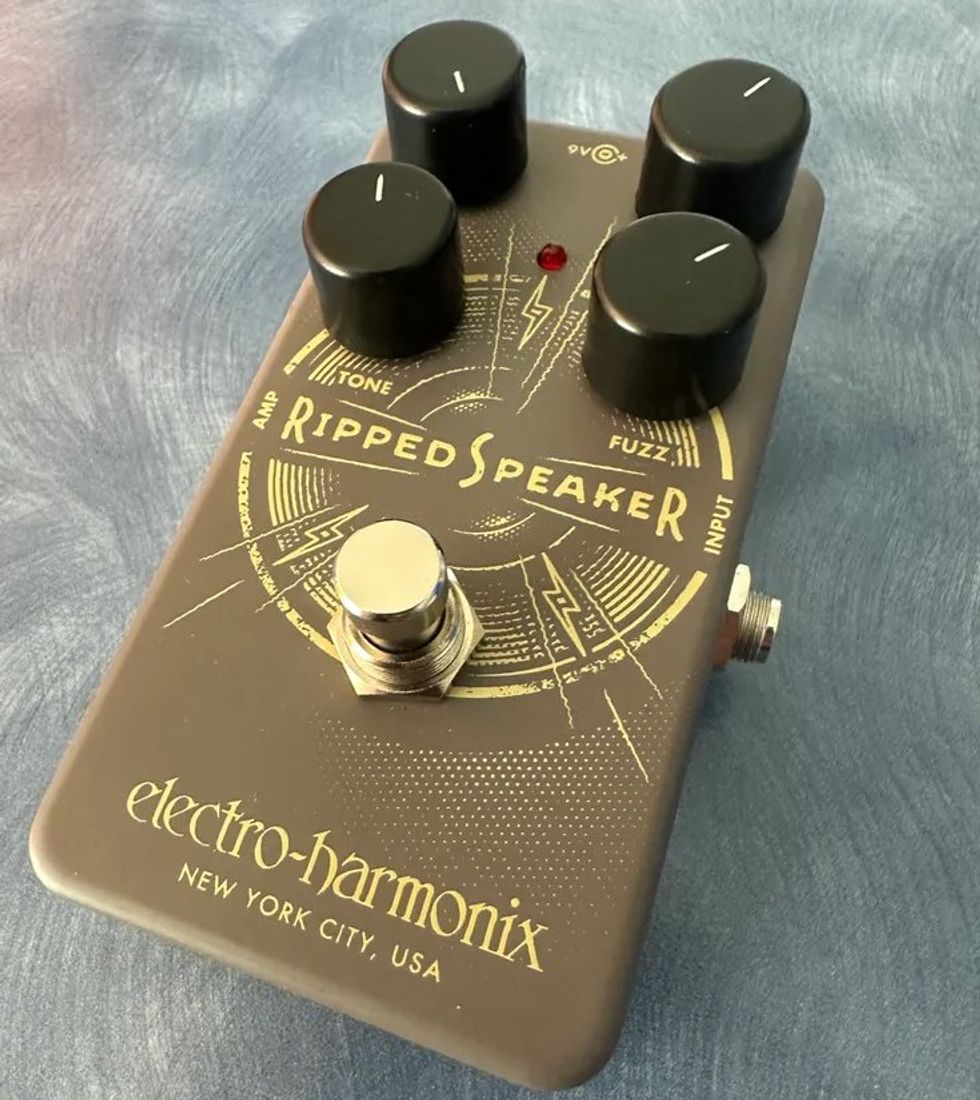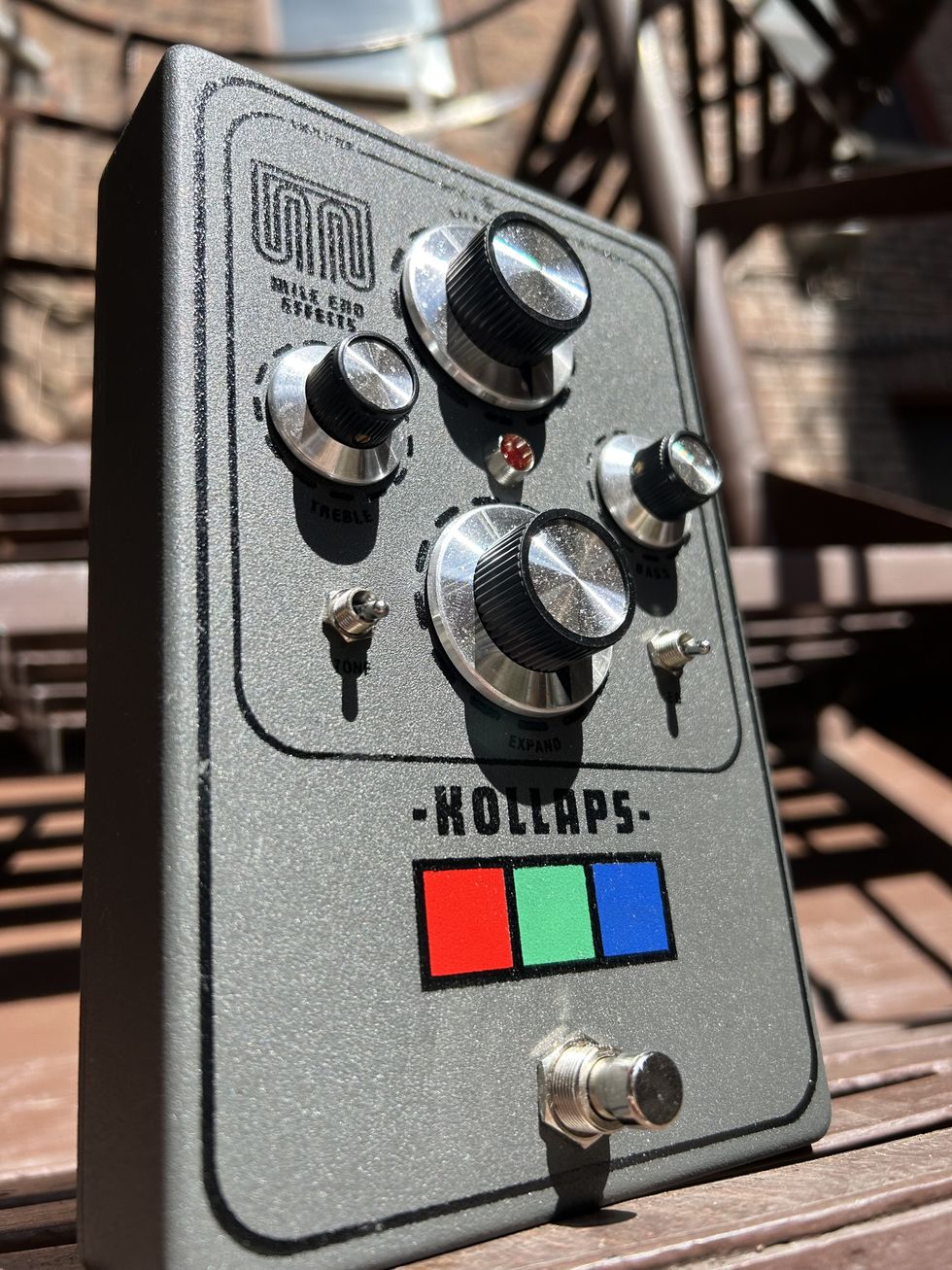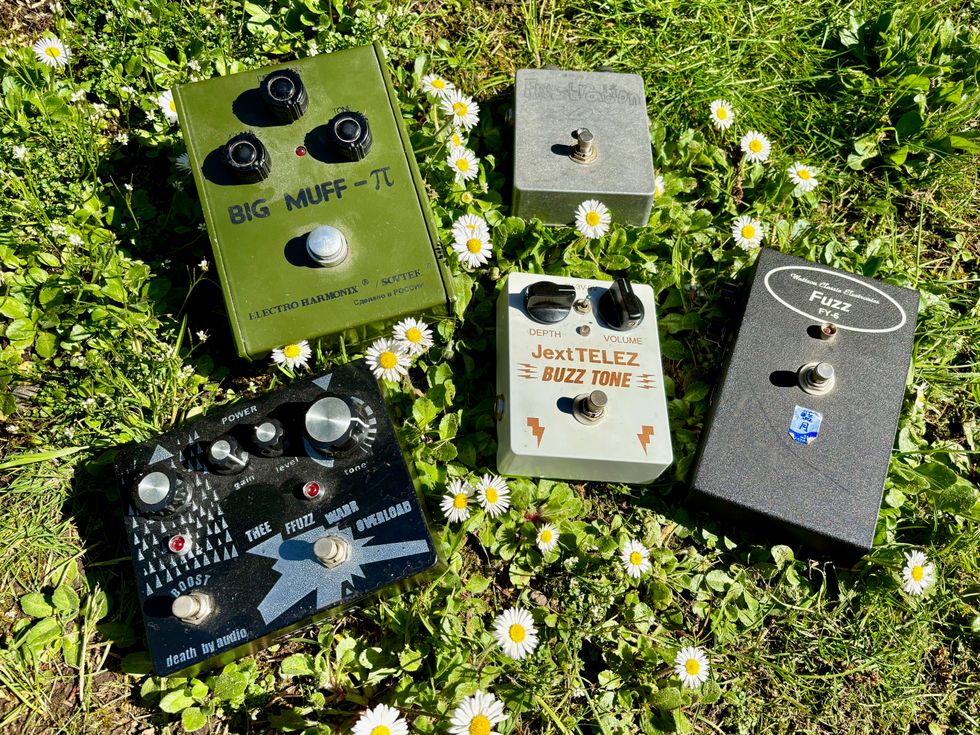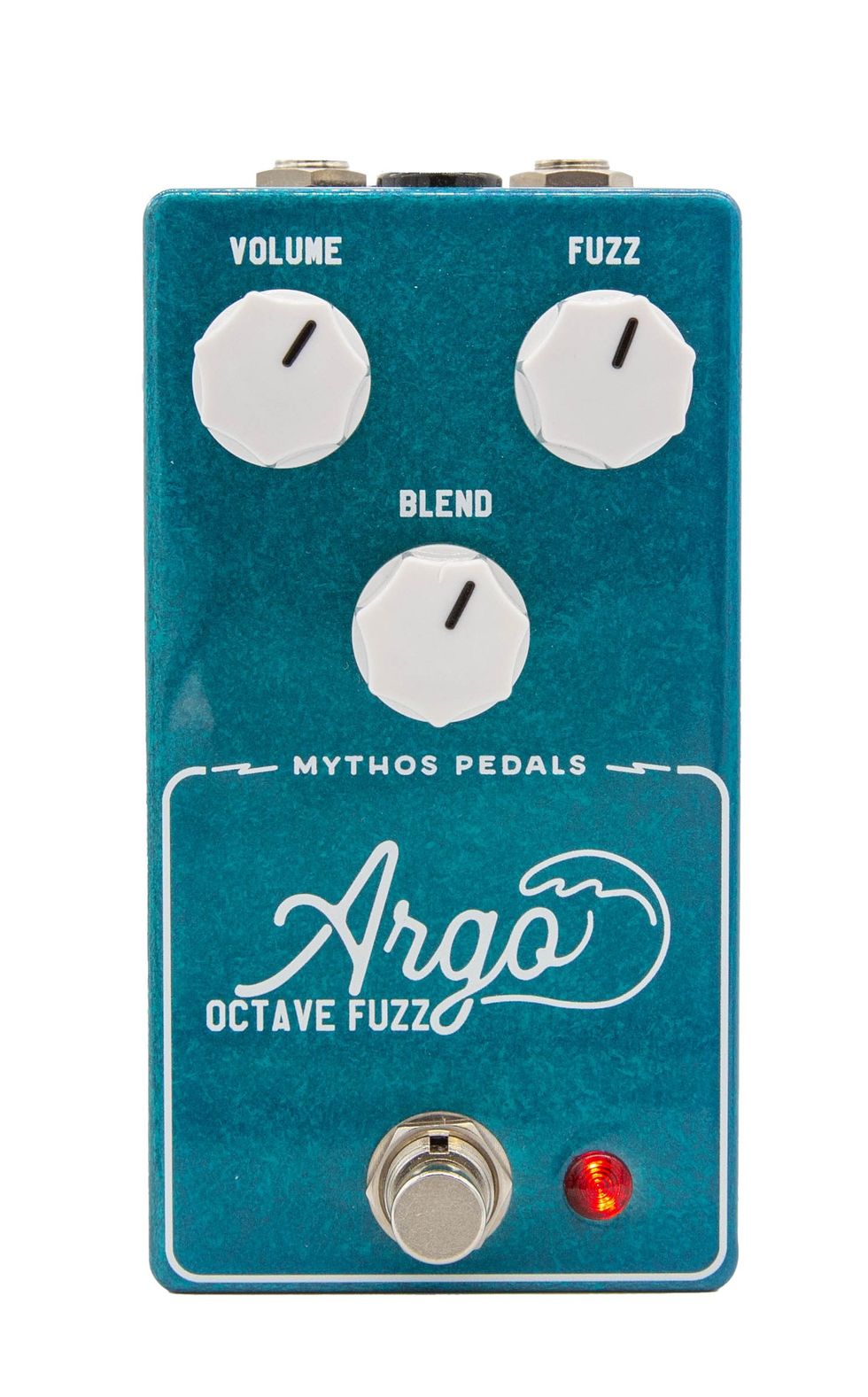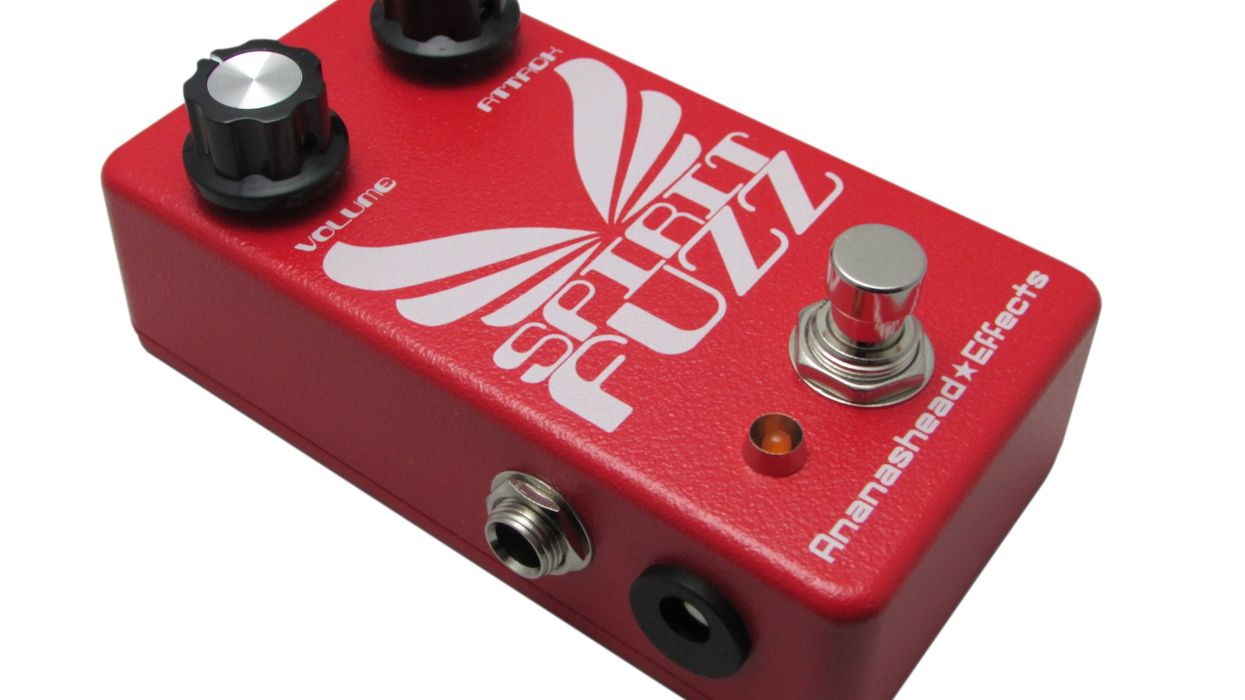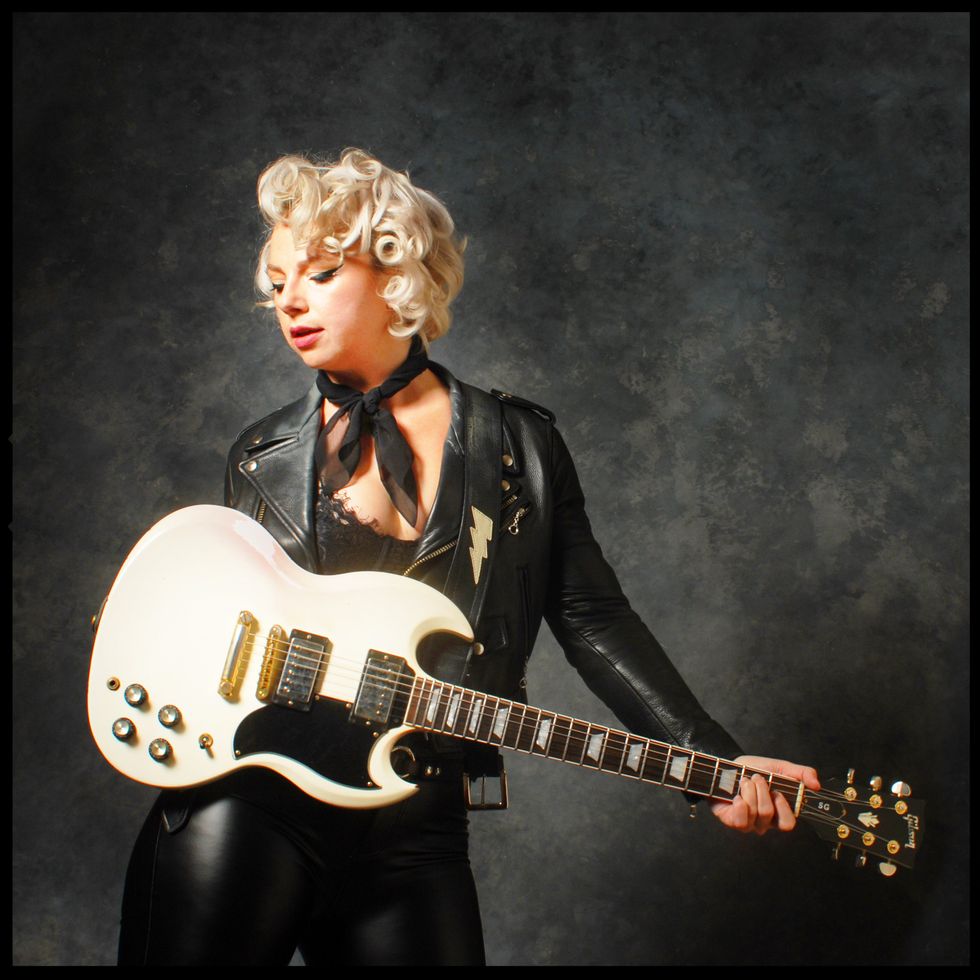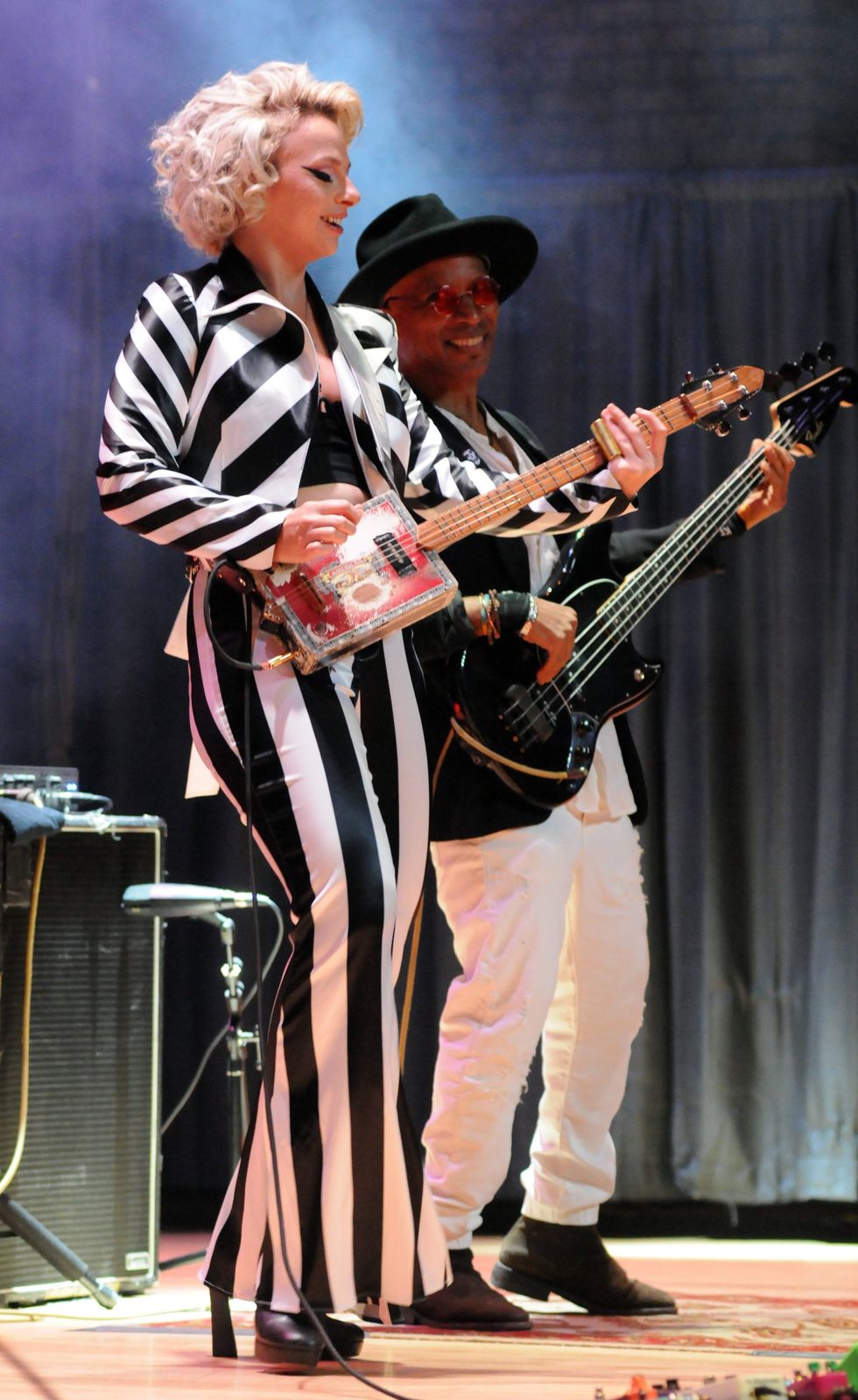Here are 16 of our favorite stomp stations from the past year, including Chris Shiflett, Joe Bonamassa, Gary Holt, J Mascis, the Aristocrats’ Bryan Beller, Wolf Van Halen, Shinedown, and more.
The Aristocrats’ Bryan Beller
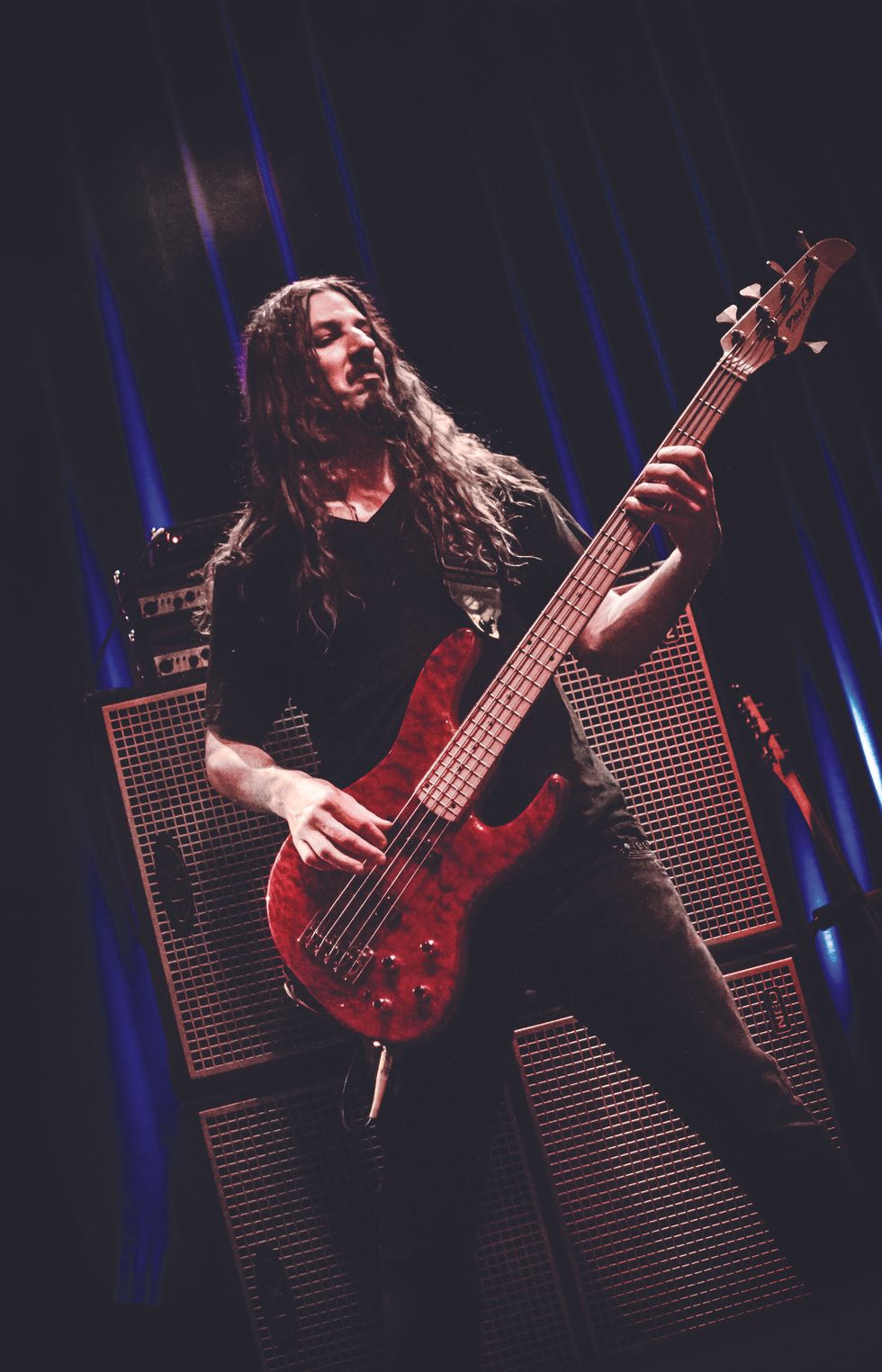
Photo by Manuela HäuBler
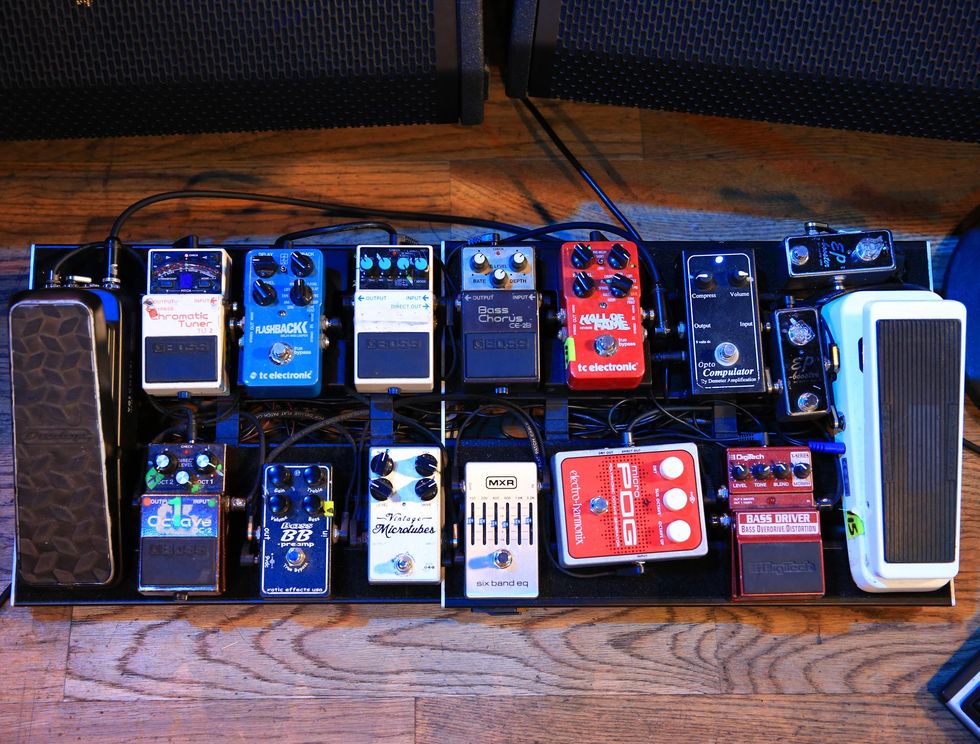
Starting at top right, Bryan Beller’s board has a pair of Xotic EP Boosters to bring up the output of his two passive instruments to match his Lull bass. Next comes a Demeter COMP-1 Opto Compulator that’s always on, followed by a TC Electronic Hall of Fame Reverb, Boss CE-2B Bass Chorus, Boss DD-3 Digital Delay, and a TC Electronic Flashback Delay/Looper. Moving to the bottom left, there’s a Boss OC-2 Octave and an Xotic Bass BB Preamp (Beller’s main overdrive). The Darkglass Electronics Vintage Microtubes and MXR M109S Six Band EQ are used for a beefier, RAT-like sound. Then there’s an EHX Micro POG set to an octave up and an old DigiTech X-Series Bass Driver that pushes the BB Preamp and runs into the Dunlop 105Q Cry Baby Bass Wah pedal (white), giving vocal-like sweeps more definition. Beller also has a Dunlop DVP3 Volume (X) Volume and Expression pedal and a Boss TU-2 Chromatic Tuner. Beller has incorporated the Behringer FCB1010 MIDI controller into his rig so he can provide some “low-rent Geddy Lee” moments in the set via a Roland JV-1010 64-Voice Synth Module.
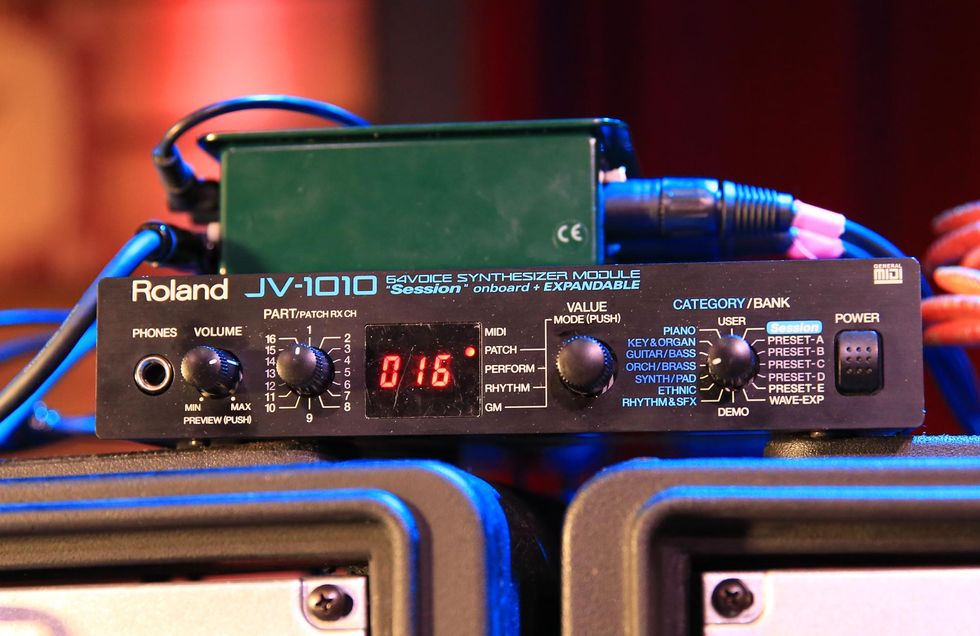
Beller has incorporated the Behringer FCB1010 MIDI controller into his rig so he can provide some “low-rent Geddy Lee” moments in the set via a Roland JV-1010 64-Voice Synth Module.
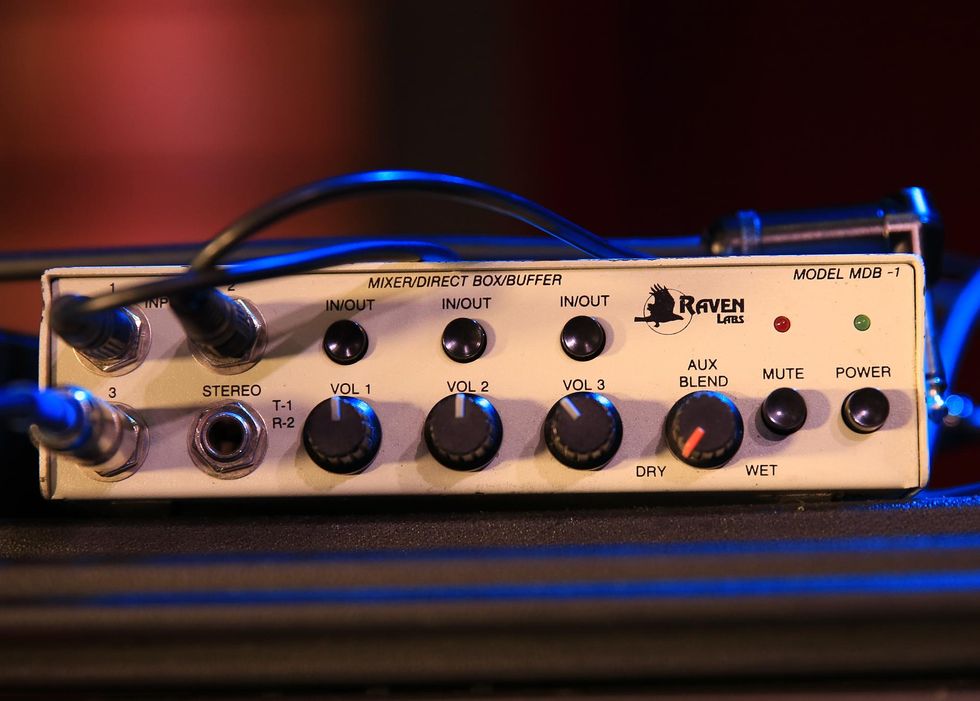
Using the Raven Labs MDB-1 Mixer/Direct Box/Buffer for his pedals and running the Roland JV-1010 into his amps allows Beller to employ both his bass and the synth module at the same time.
Rig Rundown: The Aristocrats' Guthrie Govan & Bryan Beller [2022]
Nitty Gritty Dirt Band’s Jeff and Jaime Hanna
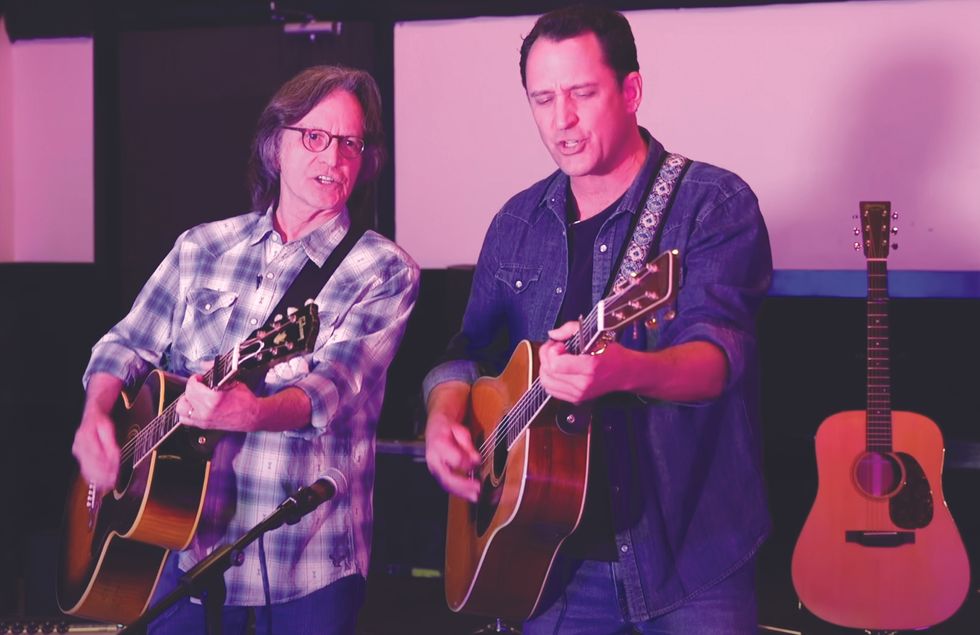
Jeff Hanna
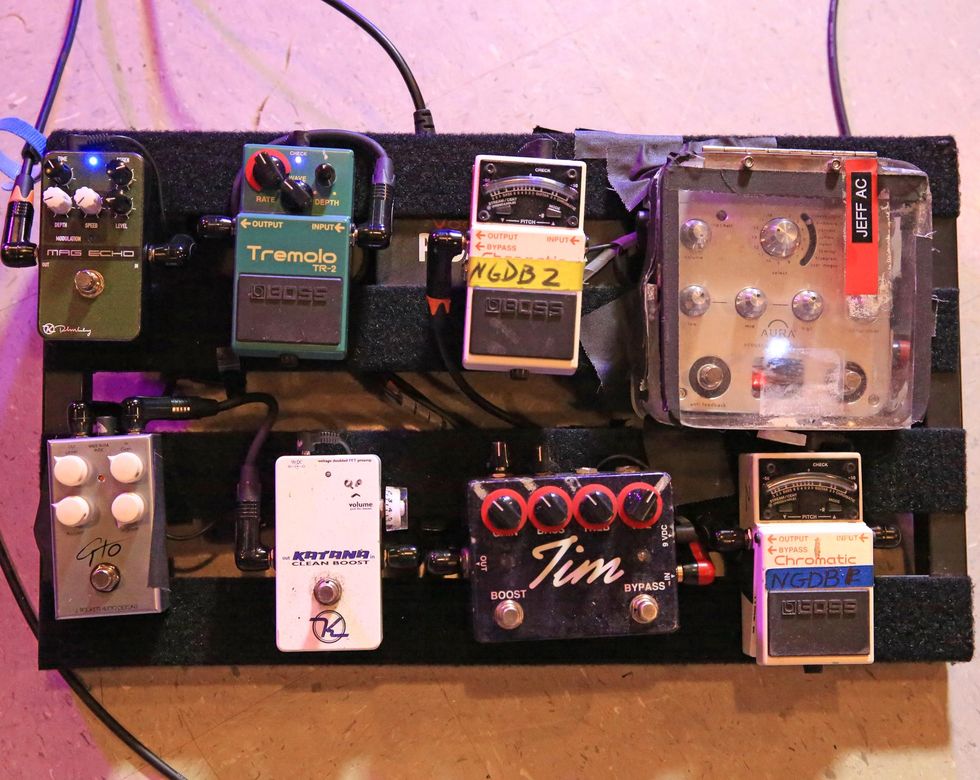
Jeff Hanna, who co-founded the Nitty Gritty Dirt Band in 1966, runs his acoustic guitars through a Fishman Aura Spectrum DI and a Boss TU-3 Chromatic Tuner. The electric side of his board includes another Boss TU-3, a Paul Cochrane Tim V3 Overdrive, a Keeley Katana Clean Boost, a J. Rockett GTO, a Keeley-modded Boss TR-2 Tremolo, and a Keeley Mag Echo.
Jaime Hanna
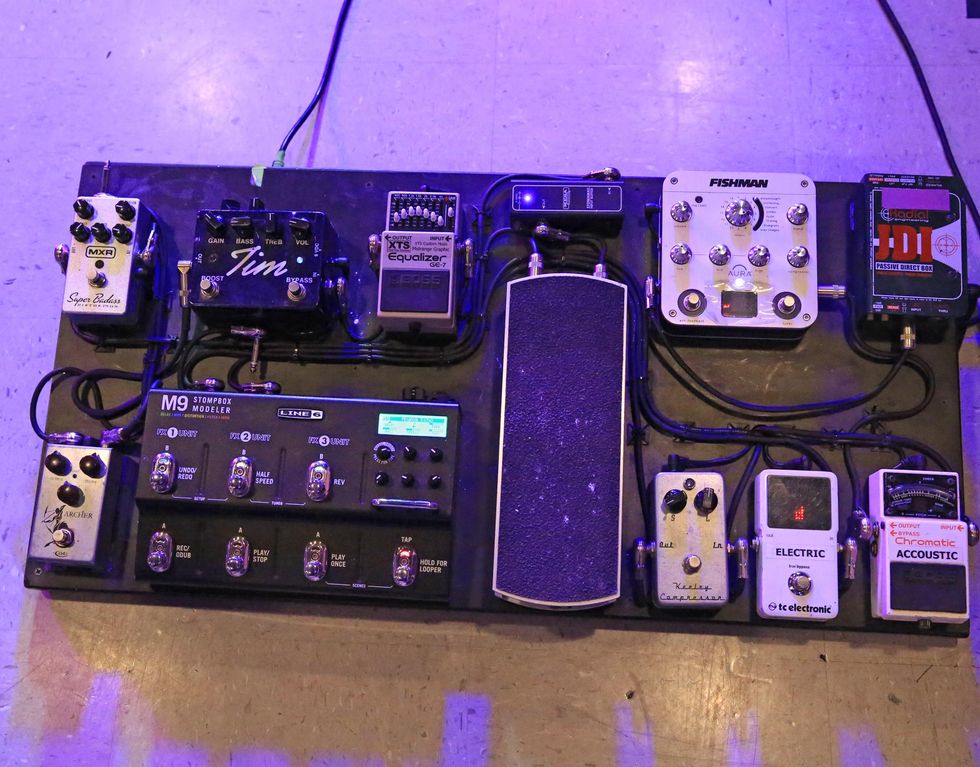
His son Jaime combines acoustic and electric pedals on one board. The acoustic side features a Fishman Aura Spectrum DI, Boss TU-3 Chromatic Tuner, and a Radial JDI direct box as a back-up. For electric, there’s an Ernie Ball volume pedal that feeds a TC Electronic tuner. The main out hits a Mesa/Boogie Stowaway Class-A Input Buffer, a Keeley Compressor, a Paul Cochrane Tim Overdrive, a J. Rockett Archer, an MXR Super Badass Distortion, a Boss GE-7 Equalizer modded by Nashville’s XTS, and a Line 6 M9 Stompbox Modeler Multi-Effects pedal. A Truetone 1 SPOT PRO CS12 provides the juice.
Rig Rundown: The Nitty Gritty Dirt Band’s Jeff and Jaime Hanna
Tetrarch’s Diamond Rowe
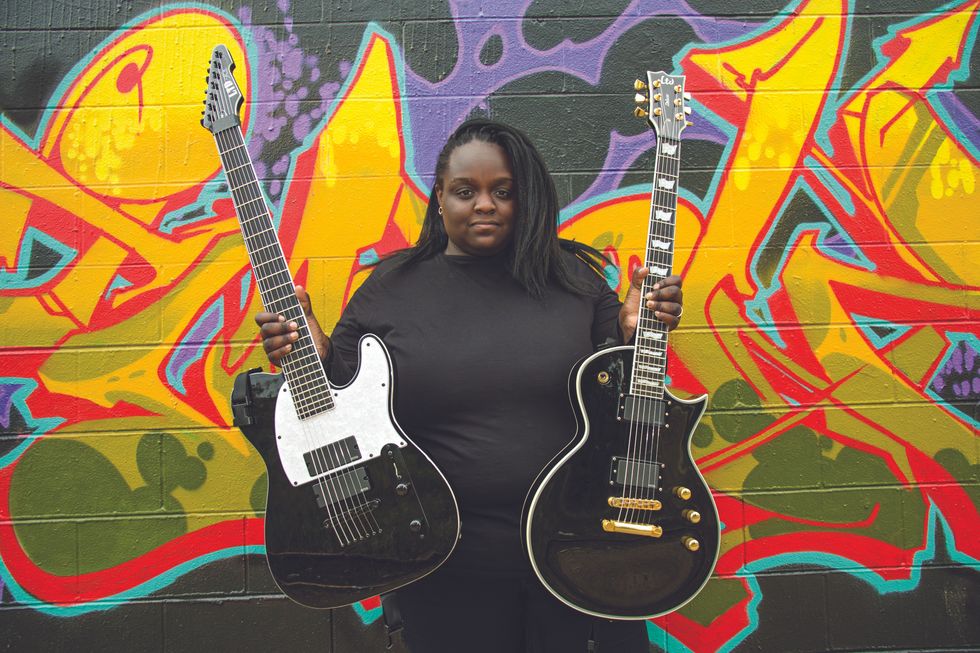
Photo by Amy Harris
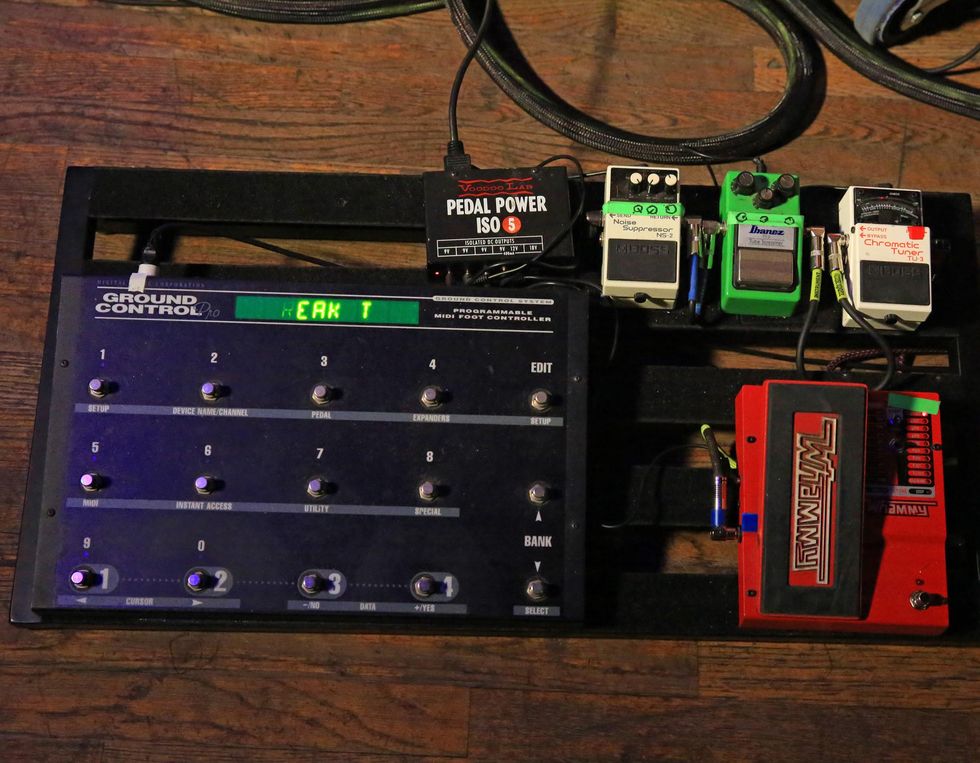
Shredder Diamond Rowe keeps things succinct. Her stage setup features an always-on Ibanez TS9 Tube Screamer and a DigiTech Whammy for pure fun and note obliterating. A pair of utilitarian Boss stomps—an NS-2 Noise Suppressor and TU-3 Chromatic Tuner—keep her strings clean and accurate. There’s also a Voodoo Lab Pedal Power ISO-5 and Ground Control Pro MIDI Foot Controller.
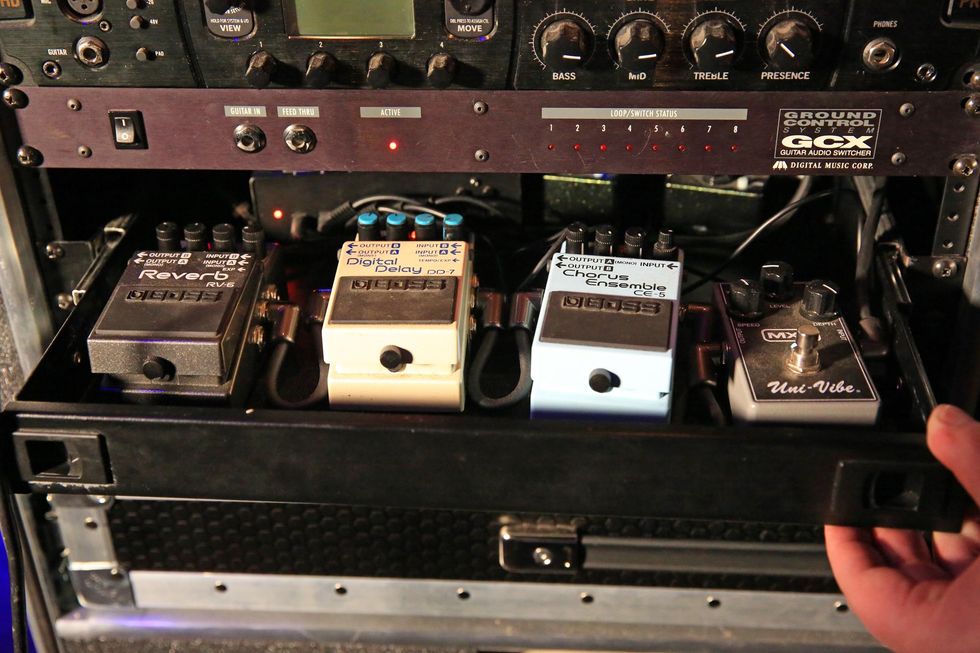
In a separate rack, Rowe hides her “freak tone” patch. There lurks a Boss RV-6 Reverb, Boss DD-7 Digital Delay, Boss CE-5 Chorus Ensemble, and a MXR Uni-Vibe Chorus/Vibrato, plus a pair of tucked-away MXR Carbon Copy Analog Delays. The rack toys are fired by a Voodoo Lab Pedal Power 2 Plus.
Rig Rundown: Tetrarch's Diamond Rowe & Josh Fore
Marcus King
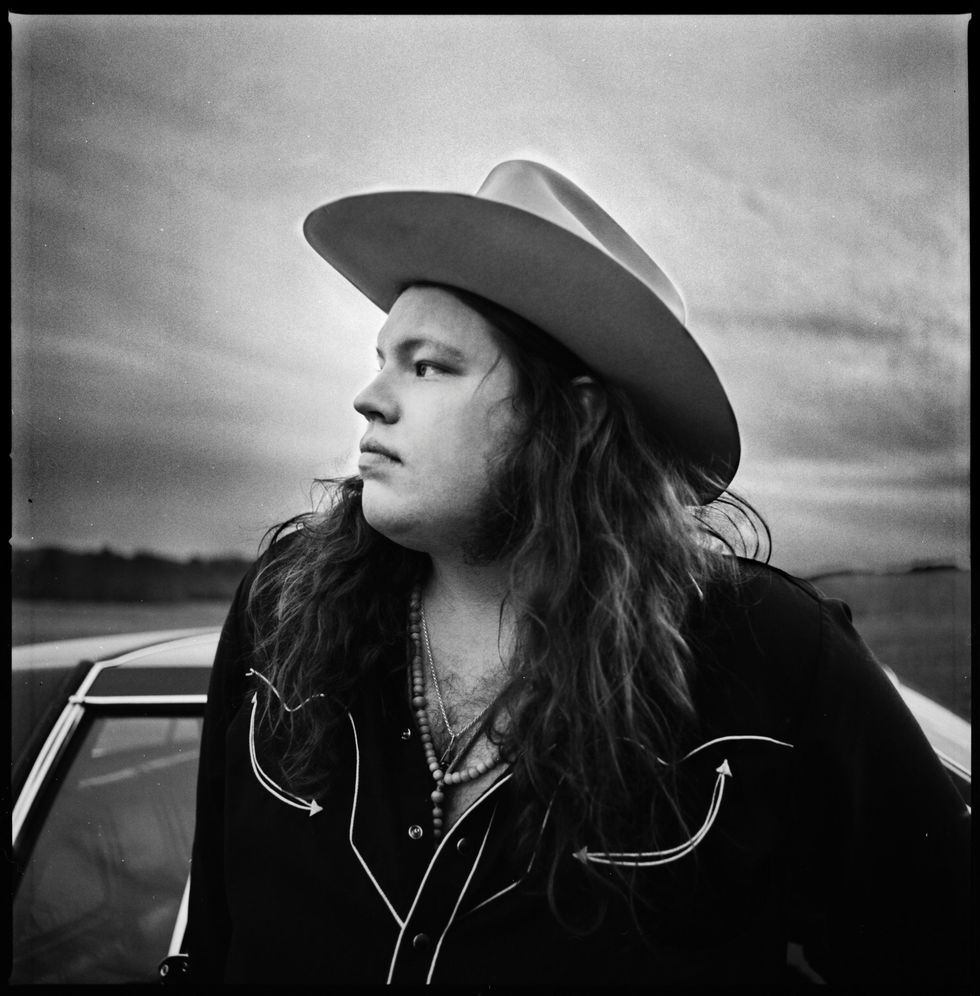
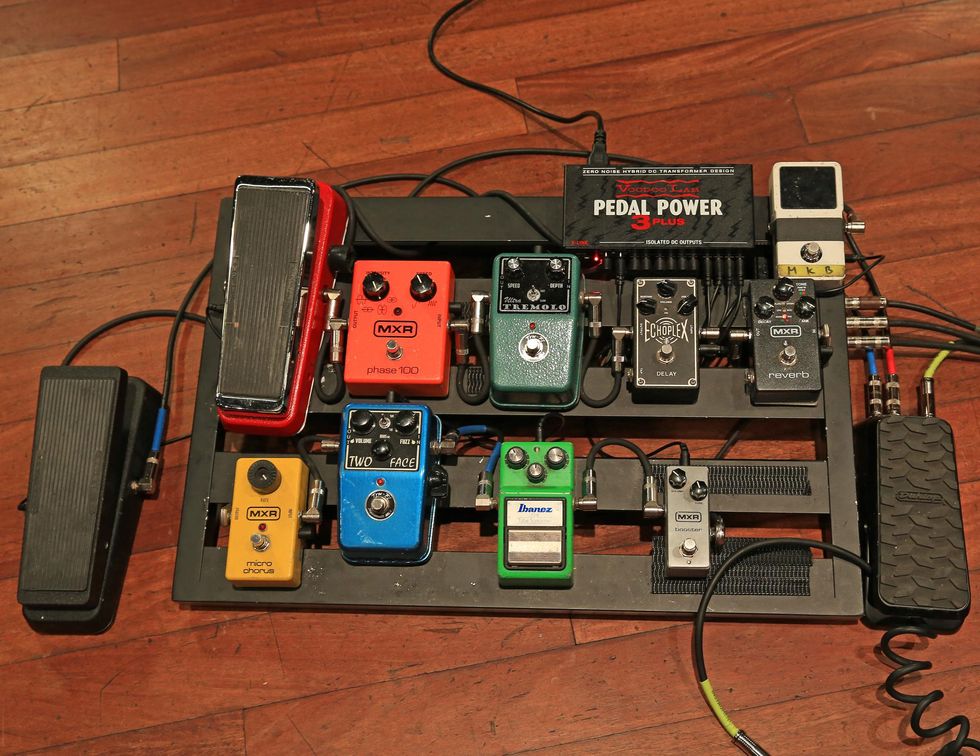
Roots powerhouse Marcus King runs his guitar’s cable into a Dunlop Volume (X) 8. Then his signal hits a Dunlop Cry Baby Wah, an MXR Booster, an Ibanez TS9 Tube Screamer, a Tru-Fi Two Face Fuzz, MXR Micro Chorus, Dunlop Rotovibe Chorus/Vibrato, MXR Phase 100, Tru-Fi Ultra Tremolo, Dunlop Echoplex Delay, MXR Reverb, and a Radial Shotgun signal splitter and buffer. Juice? That’s via a Voodoo Lab Pedal Power 3 Plus.
Marcus King's Pedalboard
Foo Fighters’ Chris Shiflett
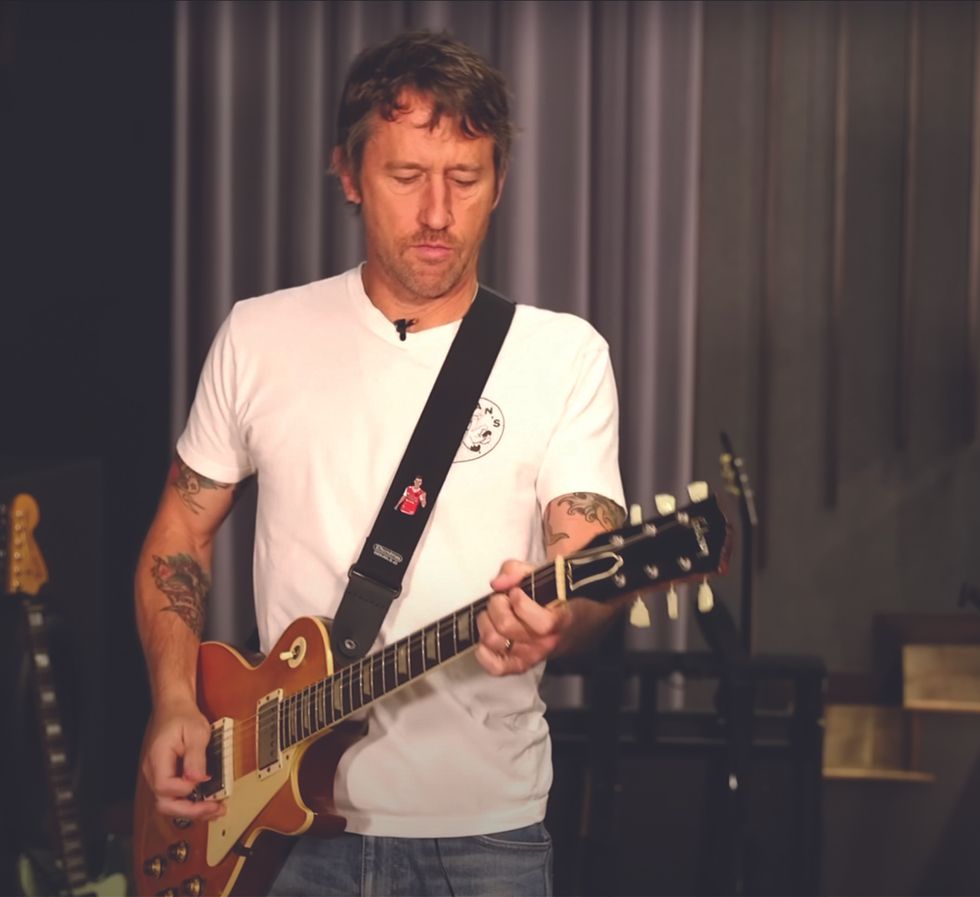
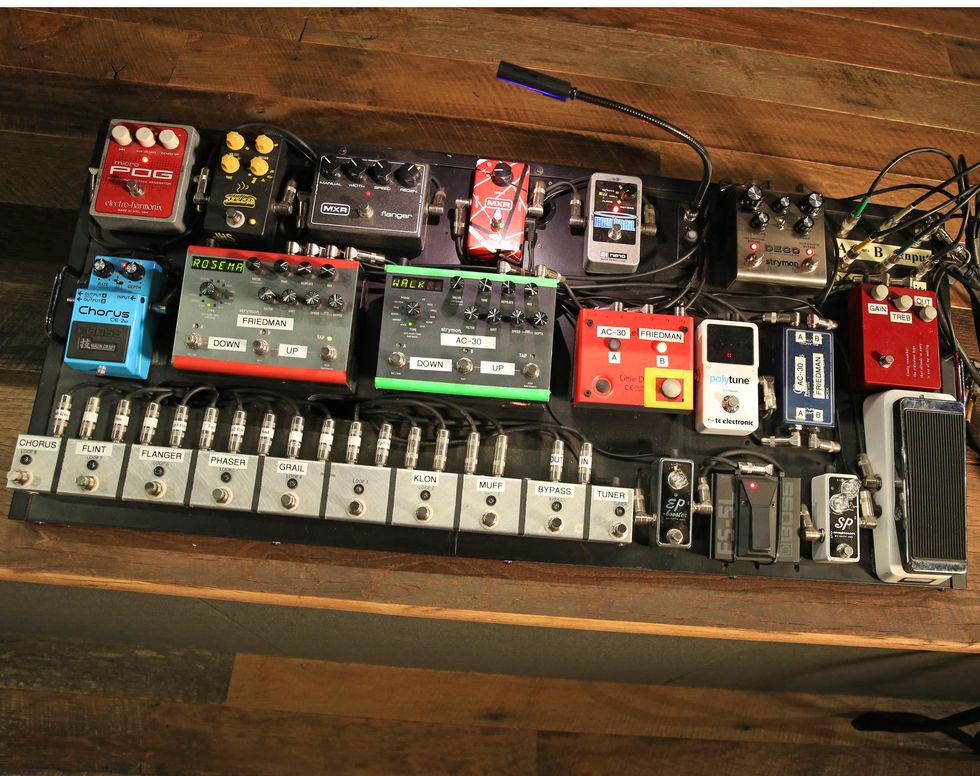
The mega-rockers’ Chris Shiflett starts his pedalboard with an EHX Micro POG, followed by a JHS Muffuletta, an MXR Flanger and EVH Phase 90, an EHX Holy Grail reverb, a Strymon Deco, and a Klon KTR. The next row sports a Boss CE-2W Waza Craft Chorus, a couple of Strymon TimeLines (one for each amp), and down below is a trio of Xotics—an EP Booster, SP Compressor, and an XW-1 Wah. Utilitarian boxes include a Lehle Little Dual II Amp Switcher, a Palmer PLI-05 Line Isolation Box, a Boss FS-5L Foot Switch (to toggle between clean and dirty on his Friedman Brown Eye), and a TC Electronic PolyTune.
Chris Shiflett's Pedalboard
Mammoth WVH's Wolf Van Halen
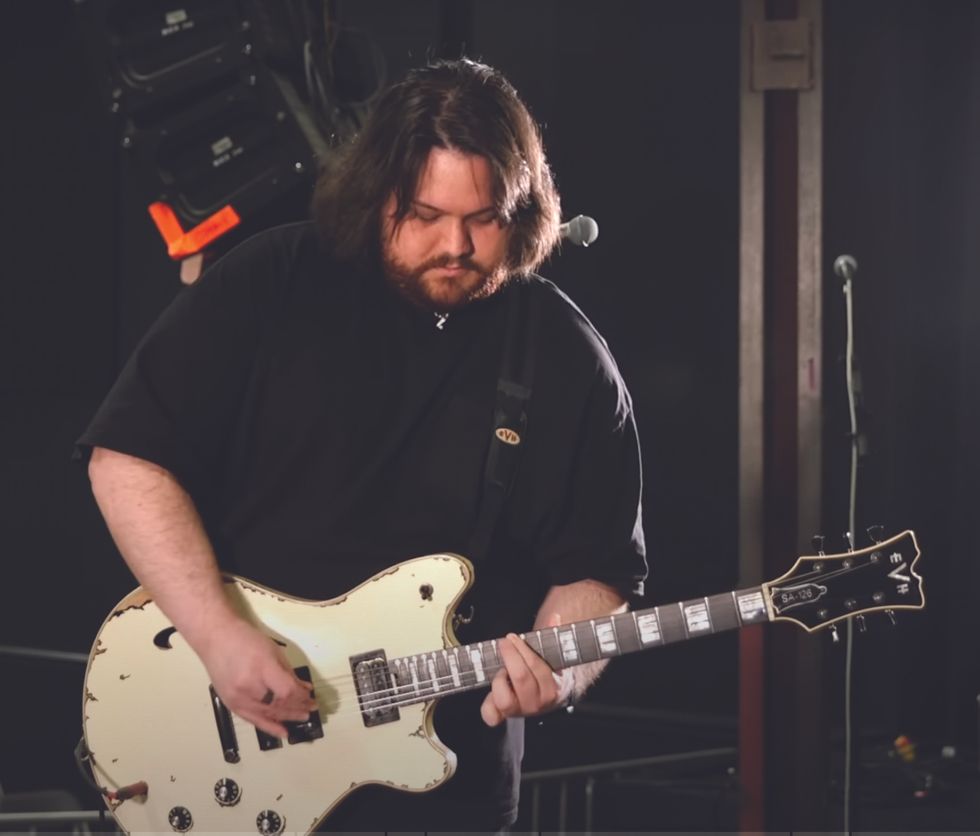
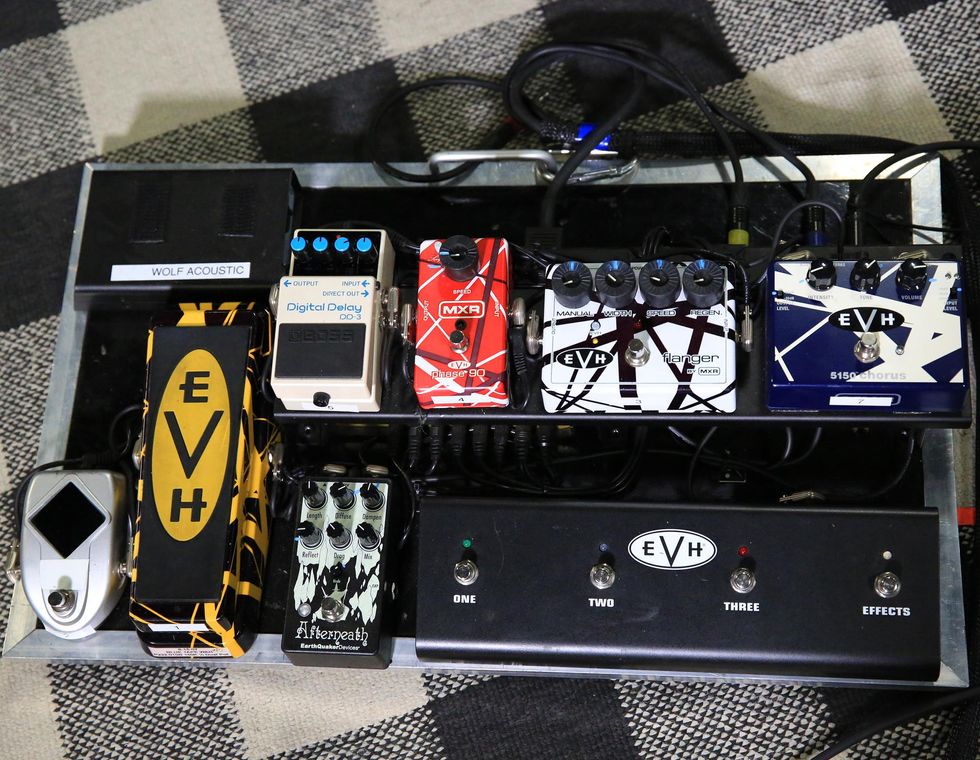
Wolf Van Halen brought every EVH pedal (aside from the 5150 Overdrive) for his band’s 2022 tour. The Dunlop EVH95 Cry Baby Wah gets a workout for the solo of “You’ll Be the One.” The MXR EVH 5150 Chorus and the MXR EVH Phase 90 have become interchangeable for him. The MXR EVH117 Flanger gets sprinkled in, and for the solo on “Distance,” he always uses the Boss DD-3 Digital Delay and the EarthQuaker Devices Afterneath. An acoustic DI and tuner consume the rest of the real estate.
Wolf Van Halen's Pedalboard
Full Rig Rundown: https://bit.ly/MammothWVHRRSubscribe to PG's Channel: https://bit.ly/SubscribePGYouTubeMammoth WVH's leader details and demos the series of ...Mammoth WVH’s Ronnie Ficarro
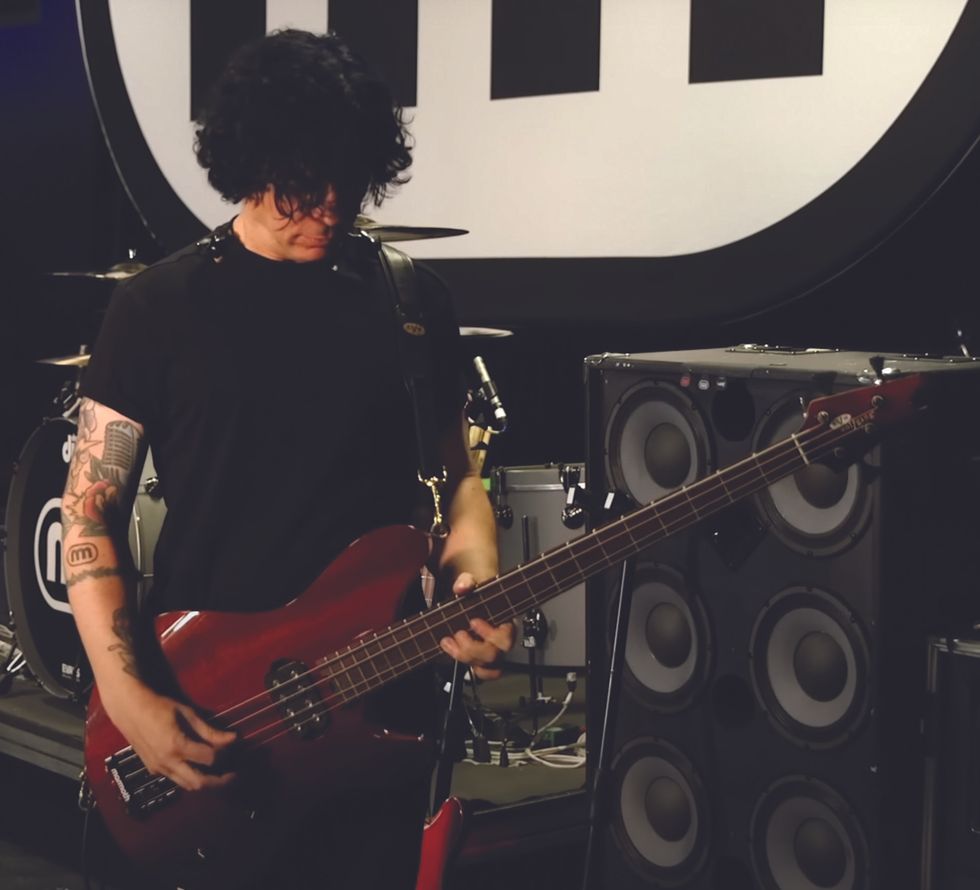
Ronnie Ficarro
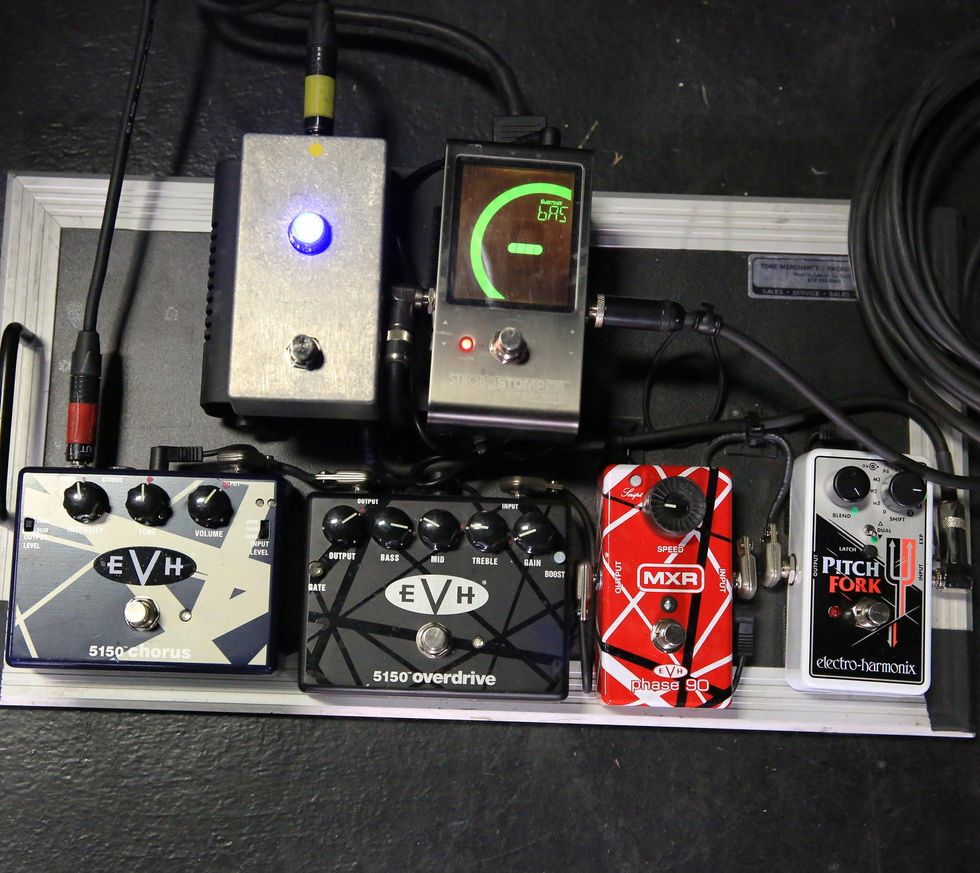
Ronnie Ficarro’s bass stomp station hosts a trio of EVH-inspired pedals: an MXR EVH 5150 Chorus, a MXR EVH 5150 Overdrive, and the MXR EVH Phase 90—plus an EHX Pitch Fork for approximating the low B roar that Wolf recorded on the song “Epiphany.” The nondescript silver box is a channel switcher for his Fender Super Bassman, and a Peterson StroboStomp HD does the tuning.
Rig Rundown: Mammoth WVH
El Ten Eleven’s Kristian Dunn
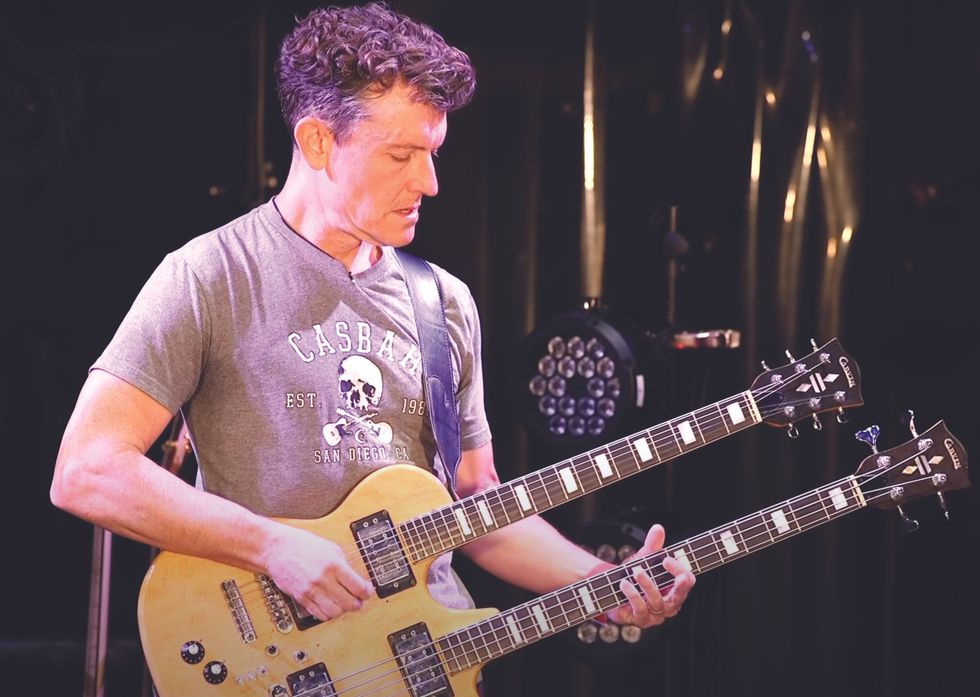
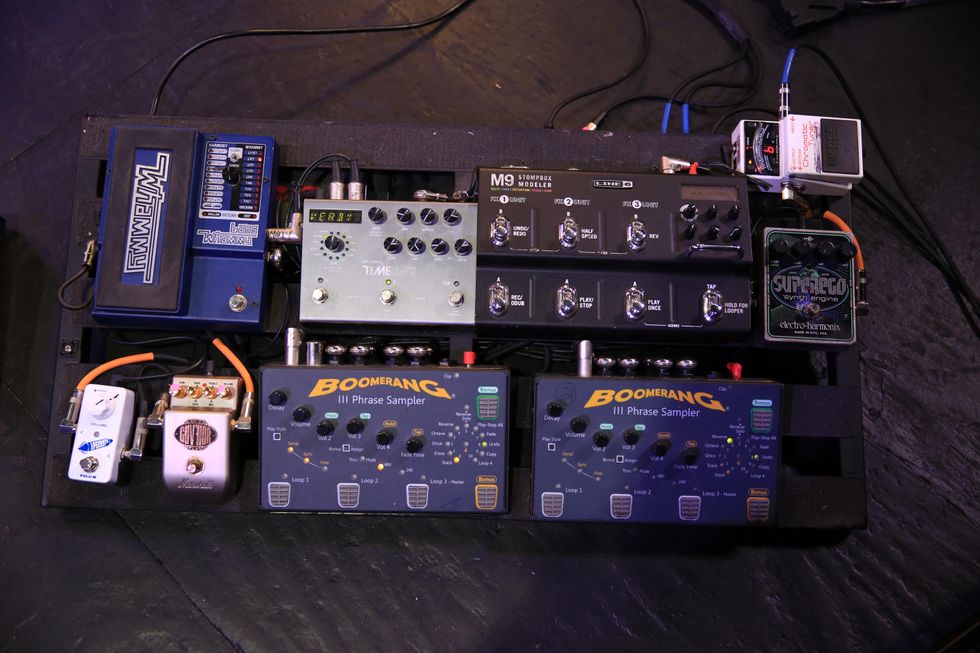
As half of this bass and drums duo, Kristian Dunn used to use three pedalboards, crouching down and manipulating settings all night. Today, he depends primarily on a Line 6 M9 Stompbox Modeler, although it’s two Boomerang III Phrase Samplers that make an El Ten Eleven show happen. In line, they’re separated by the DigiTech Bass Whammy. Dunn routes his signal this way so he can use the Whammy to shift octaves or keys on entire loops in Phrase Sampler one. The second Phrase Sampler, after the Whammy, allows him to pitch-shift specific loops without impacting the whole song or other loops. The Strymon TimeLine conjures precise repeats and specific delay settings not in the M9. The EHX Superego Synth Engine is a secret weapon, for reverse-sound passages. When he holds down the freeze function and plays the next note, it’s not audible until he releases the switch, and then the ongoing audible note blends into the second note. Cool, right? The remaining two pedals are a Nu-X NFB-2 Lacerate FET Boost and a Marshall GV-2 Guv’nor Plus. His tuner: a Boss TU-3 Chromatic. A Custom Audio Electronics RS-T MIDI Foot Controller makes Dunn’s scene changes easier, talking with the M9 and Strymon to alleviate some tap dancing.
Rig Rundown: El Ten Eleven's Kristian Dunn
Shinedown’s Zach Myers
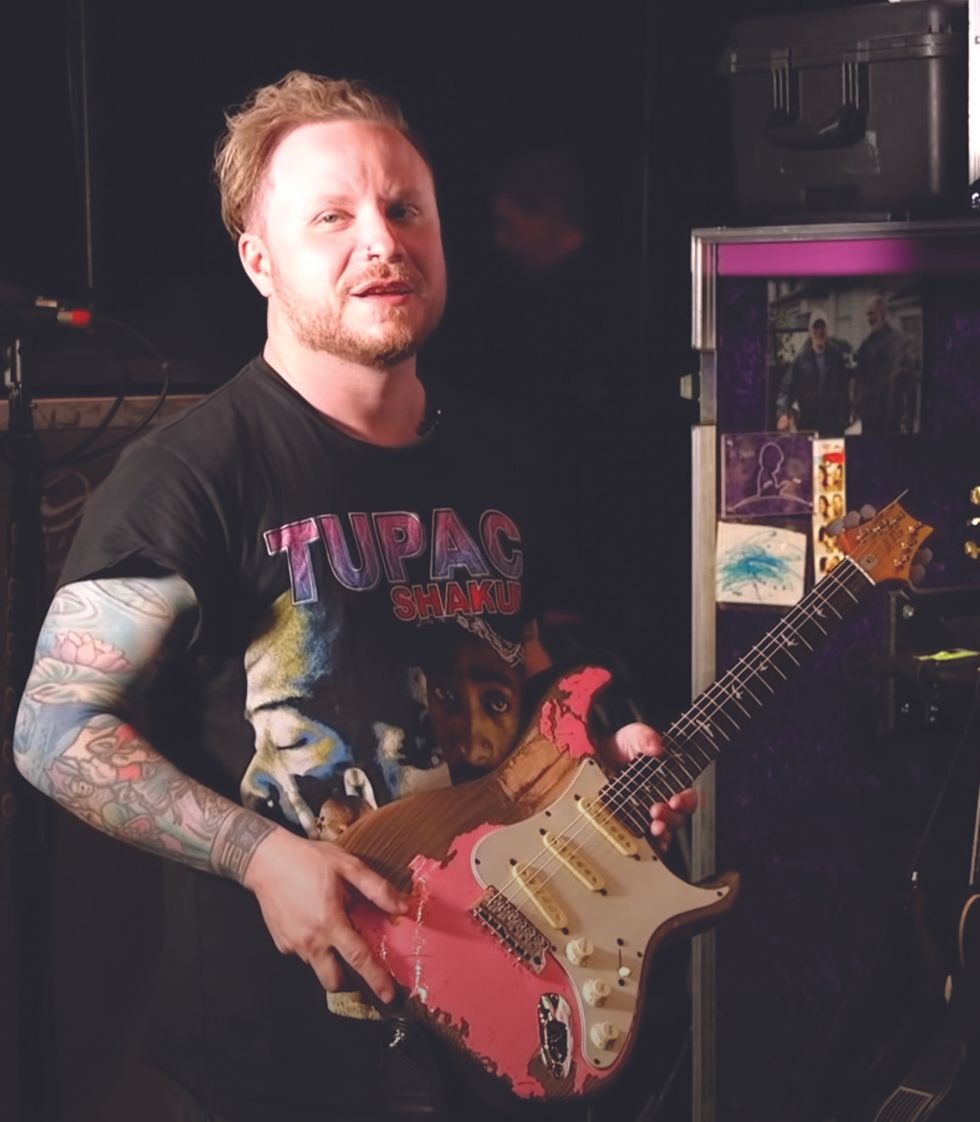
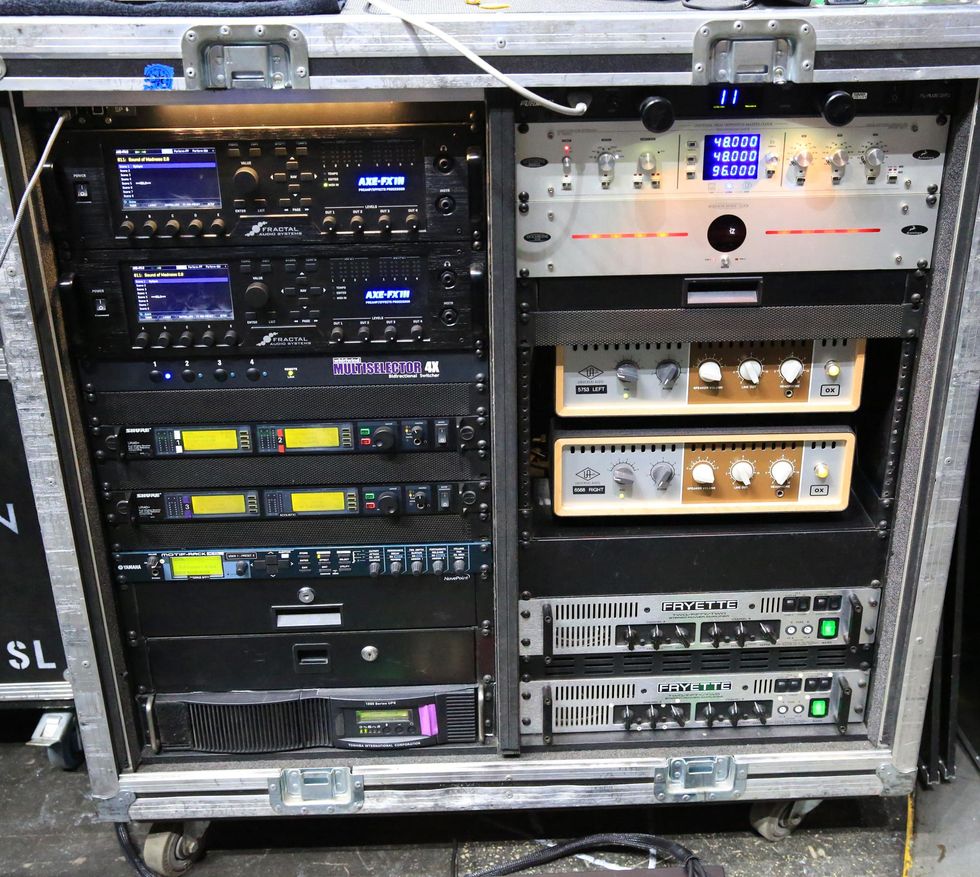
For the Shinedown guitarist, everything starts at the Fractal Audio Axe-Fx IIIs—a main and a backup. There are four channels of Shure UR4D+ wireless units (three for electric and one for acoustic). An AES digital out runs to an Antelope Audio Trinity Master Clock and Antelope Audio 10MX Rubidium Atomic Clock. This helps fatten the fully stereo, digital rig by converting it to analog. After that, IRs off the Axe-Fx (left and right) channel into a pair of Neve DIs that then feed a Fryette G-2502-S Two/Fifty/Two Stereo Power Amplifier. (There’s another for backup.) And finally, parallel signals go to two ISO cabs and two Universal Audio OX Amp Top Box reactive load boxes. Altogether, there are eight channels of guitar.
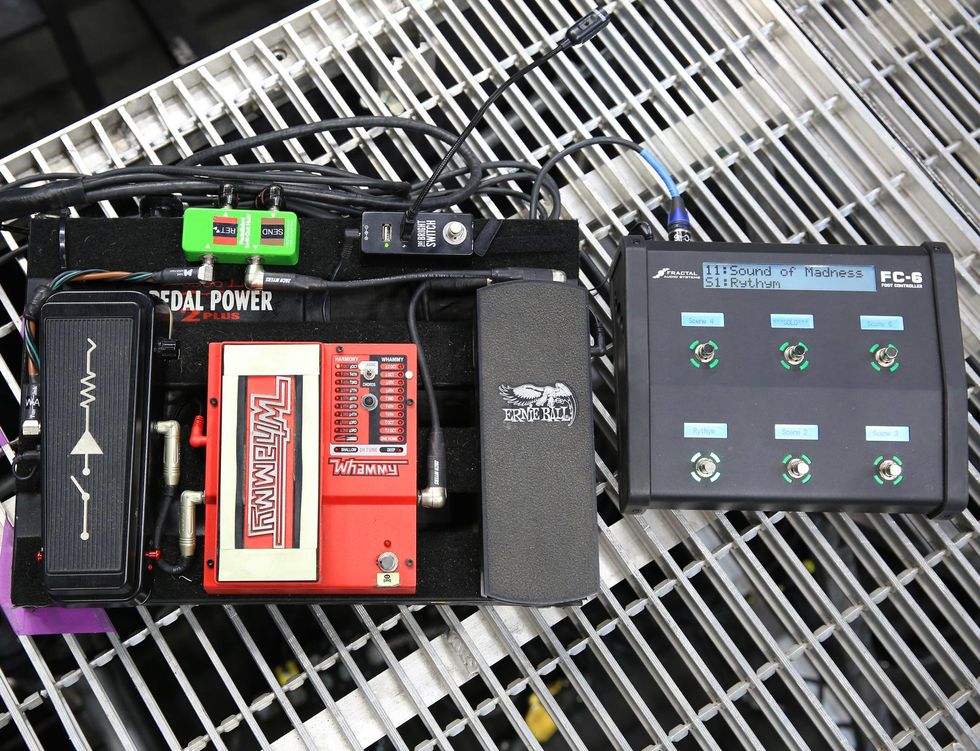
While tech Drew Foppe handles the racks, Zach still has some control at his toes via a Dunlop MC404 CAE Wah, DigiTech Whammy 5, Ernie Ball 40th Anniversary Volume Pedal, and the Fractal Audio FC-6 Foot Controller. A Voodoo Lab Pedal Power 2 Plus gives life to these pedals.
Rig Rundown: Shinedown's Zach Myers & Eric Bass [2022]
Shinedown's Eric Bass
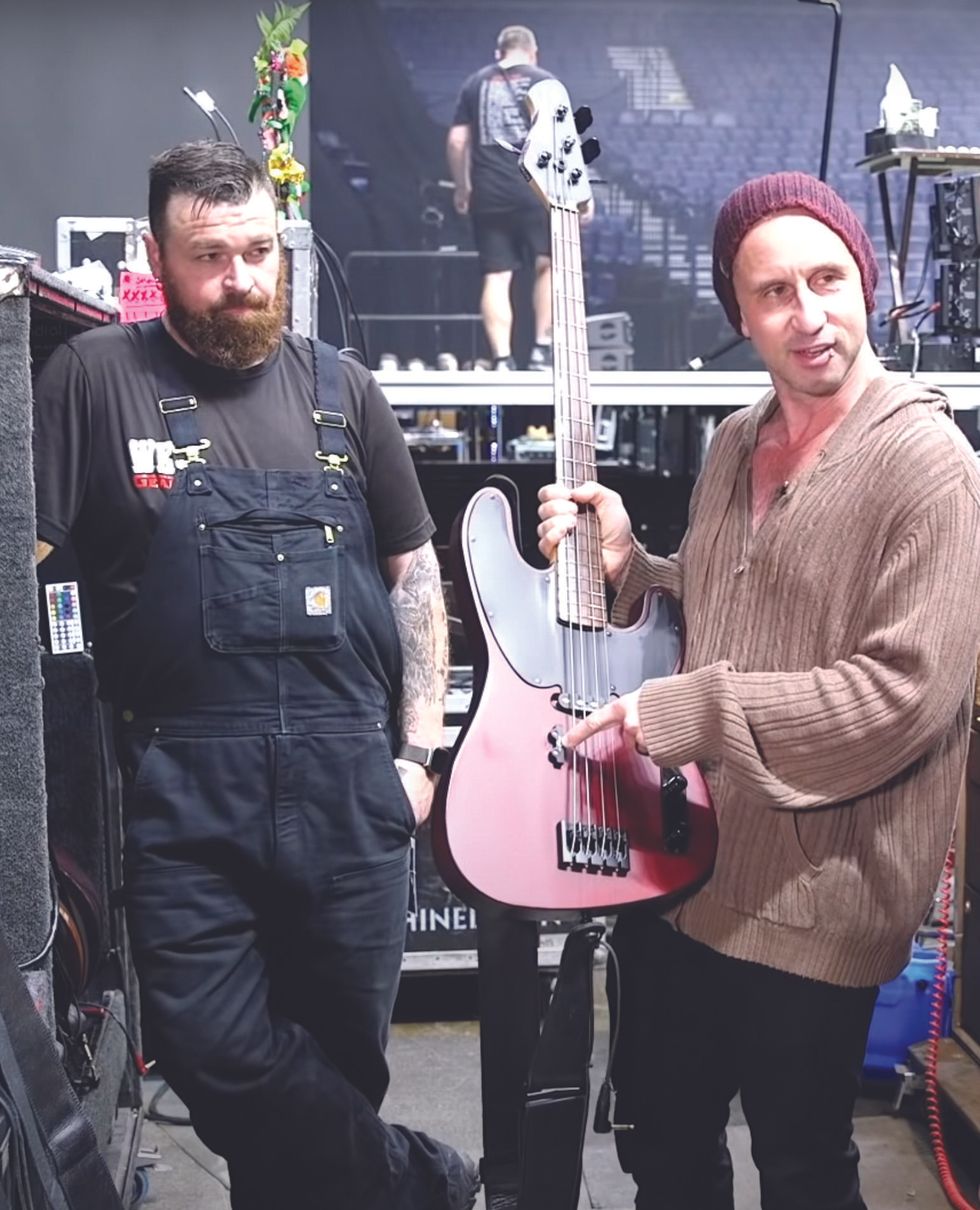
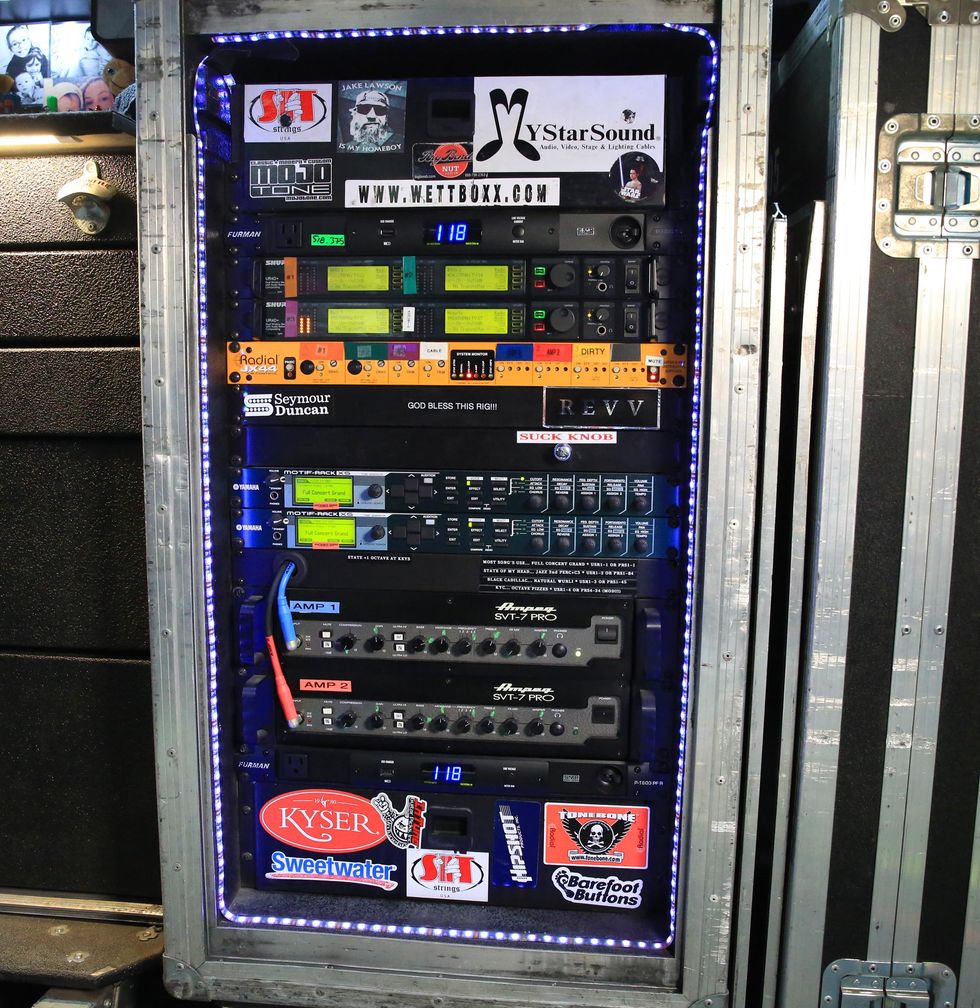
Eric Bass’ Prestige basses hit the Shure UR4D+ wireless units (similar to Myers, he has three channels for electric and a channel for acoustic), then a Neve DI, and then a Radial JX44 signal manager that feeds into an Ampeg SVT-7 Pro for clean tone (with an extra for backup).
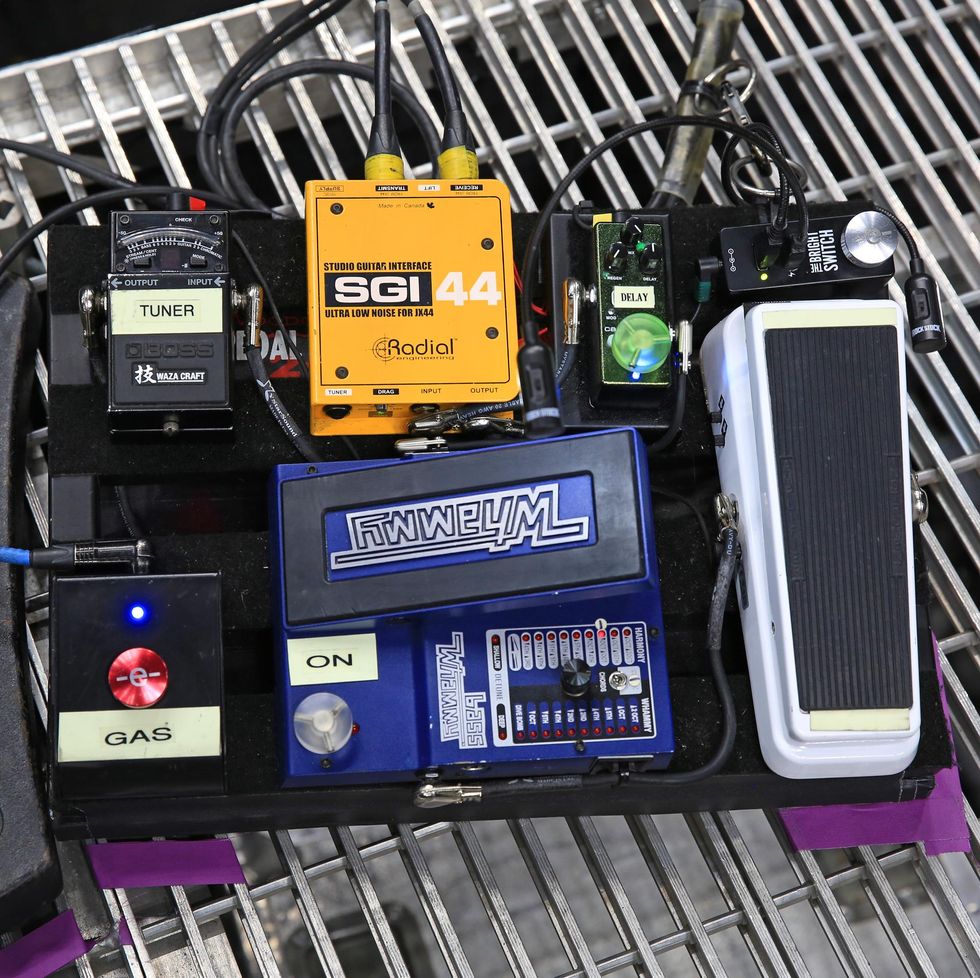
His onstage pedalboard includes a Dunlop 105Q Cry Baby Bass Wah, a DigiTech Bass Whammy, and an MXR M299 Carbon Copy Mini Analog Delay. The ‘Gas’ switch engages a Mojotone Deacon, and a Radial SGI-44 1-channel Studio Guitar Interface connects with his rackmount JX44, while a Boss TU-3W Waza Craft Chromatic Tuner and Voodoo Lab Pedal Power 2 Plus complete the lineup.
Hannah Wicklund

Photo by John VandeMergel
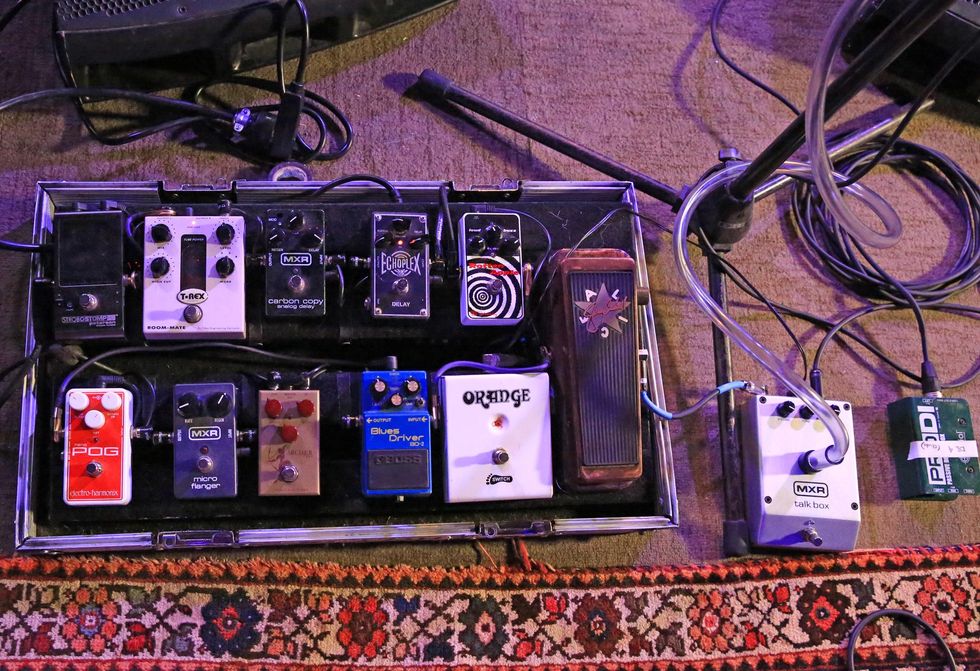
Blueser Hannah Wicklund’s pedalboard is stacked for bruising. Once the signal gets past her MXR Talk Box and Dunlop JC95 Jerry Cantrell Signature Cry Baby, it hits the channel switch for her Orange head. That stays in overdrive mode for about 75 percent of her set, which she says gives her sound its grizzly-bear lows. Next up is a classic—a Boss BD-2 Blues Driver. But this one has a Keeley mod that opens up the low end and keeps mids and highs better defined. The BD-2 gets some atmospheric help via a Dunlop EP103 Echoplex Delay, and the J. Rockett Archer also pairs with the BD-2. There’s an MXR Micro Flanger and an EHX Nano POG, a T. Rex Room-Mate Tube Reverb (on a hall setting), and a Peterson StroboStomp HD, plus an MXR Carbon Copy and a Keeley Rotten Apple OpAmp Fuzz.
Rig Rundown: Hannah Wicklund
Code Orange’s Reba Meyers
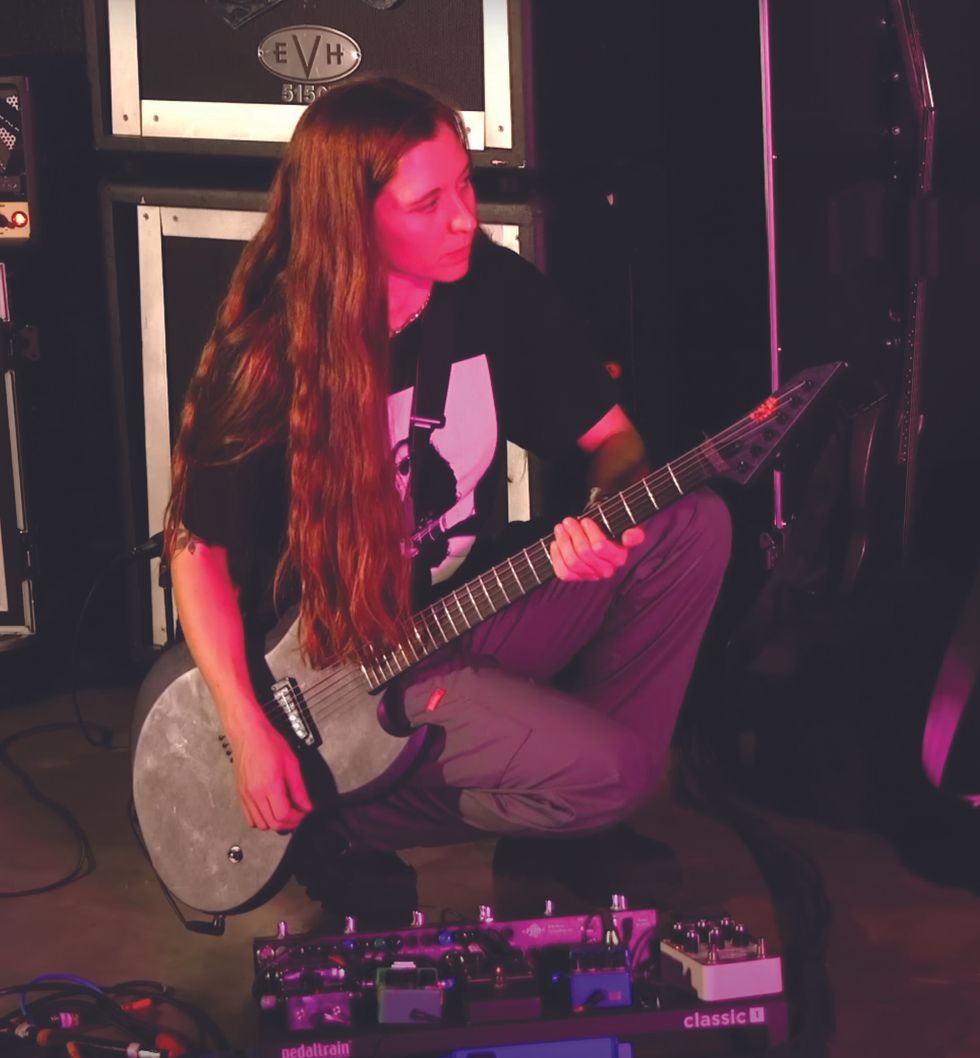
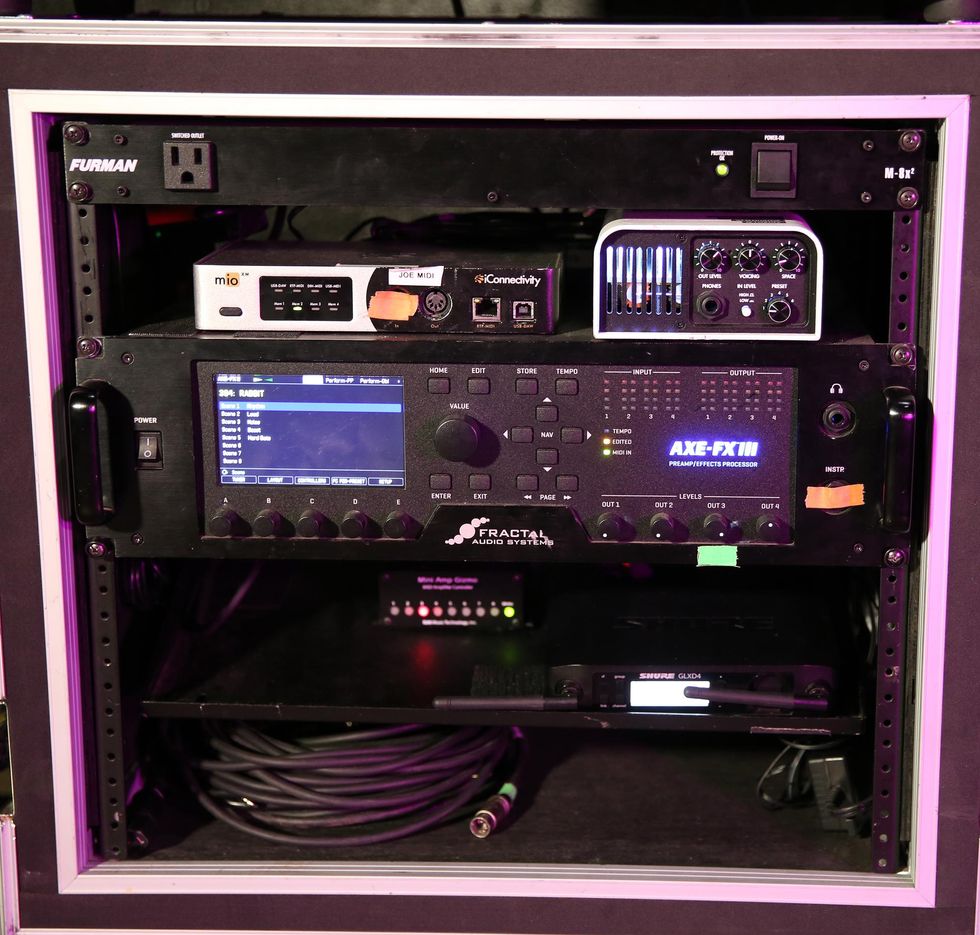
Reba Meyers’ tone starts with her signature ESP LTD RM-600 guitar and her 5150 head, but from there her sound is processed via a Fractal Audio Axe-Fx III run through the effects loop of her amp and used to coordinate channel switching. Meyers notes that for some songs she uses it only as a gate, while for others she adds in precise modulation, delay, reverbs, and “noise.” The rest of the rack features a Two-Notes Torpedo Captor X that she uses for cab sims and sending a pure, direct signal to FOH so they can mix that with the SM57 mic on the 4x12s. A Shure GLXD4 Wireless unit keeps her untethered and a RJM Mini Amp Gizmo uses MIDI to switch the amp via the Axe-Fx III.
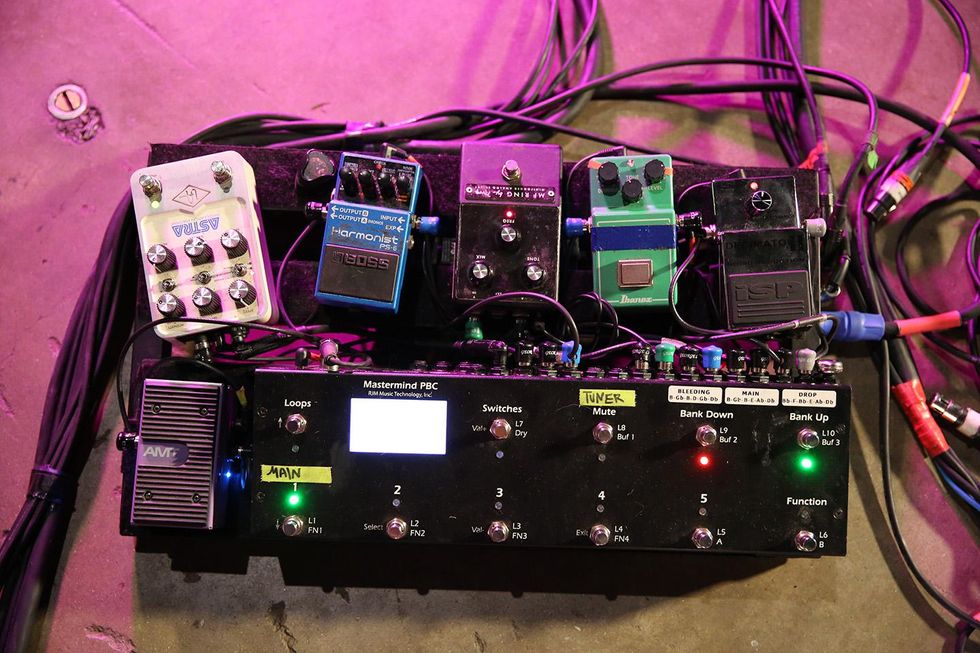
Her actual board has two always-on pedals: the ISP Decimator II Noise Reduction and the Ibanez TS9 Tube Screamer. They’re joined by a Moog MF Ring Mod, a Boss PS-6 Harmonist, an AMT Electronics WH-1 Japanese Girl Optical Wah, and an Universal Audio Astra Modulation Machine. Everything is controlled by the RJM Mastermind PBC/10.
Reba Meyers' Pedalboard [Code Orange]
Joe Bonamassa
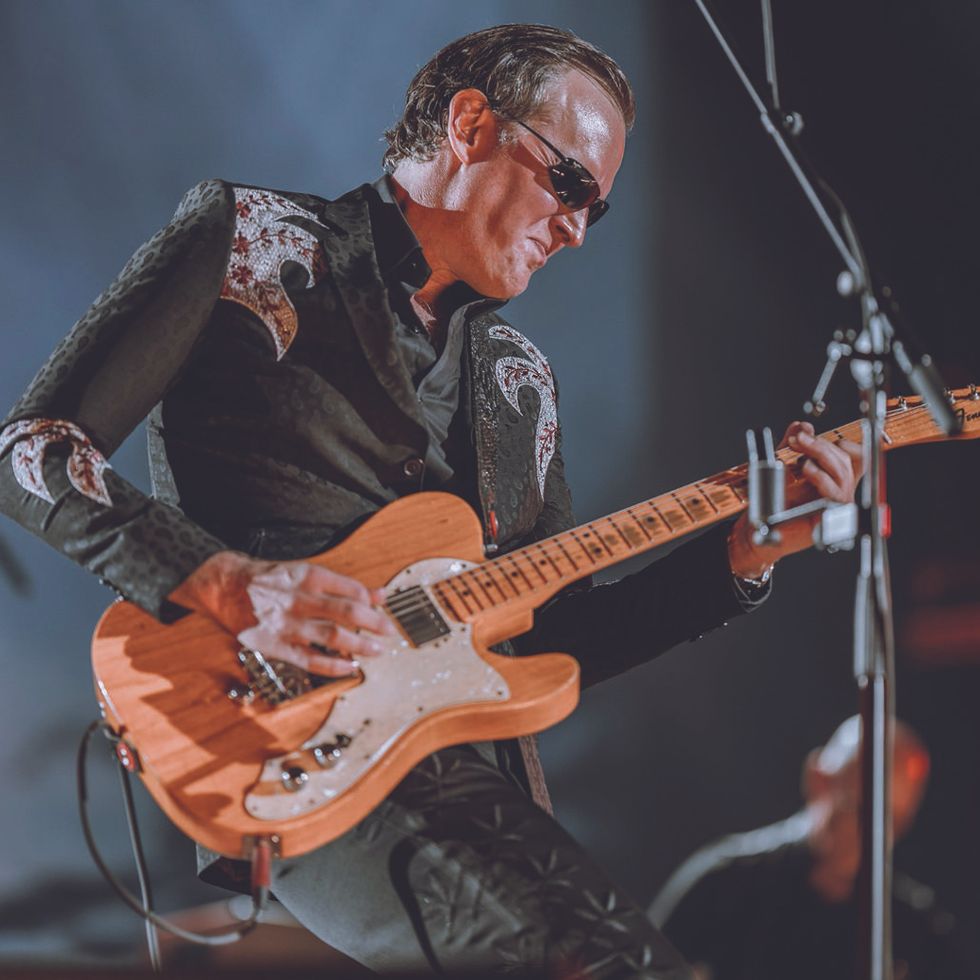
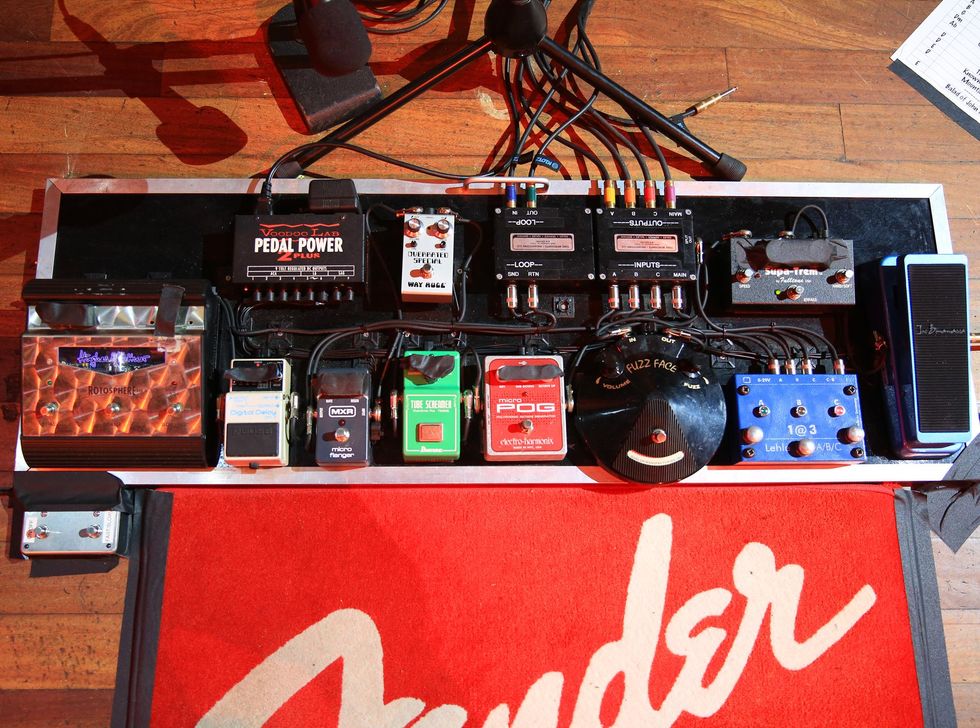
For his 2022 tour, Joe Bonamassa kept his pedalboard stocked with a Way Huge Smalls Overrated Special Overdrive, a Tone Mechanics/Racksystems Loop Box, a Tone Mechanics/Racksystems Splitter, a Fulltone Supa-Trem, a Hughes & Kettner Rotosphere, a Boss DD-2 Digital Delay, an MXR Micro Flanger, an Ibanez TS808 Tube Screamer, an EHX Micro POG, a Dunlop Joe Bonamassa Fuzz Face, a Lehle A/B/C Switcher, a Dunlop Joe Bonamassa Signature Cry Baby Wah in Pelham blue, and an on/off/fast/slow dual switch for his Mesa/Boogie Revolver rotating speaker cabinet. Juice came from a Voodoo Lab Pedal Power 2 Plus.
Joe Bonamassa's "Boomer" Pedalboard
Exodus’ Gary Holt
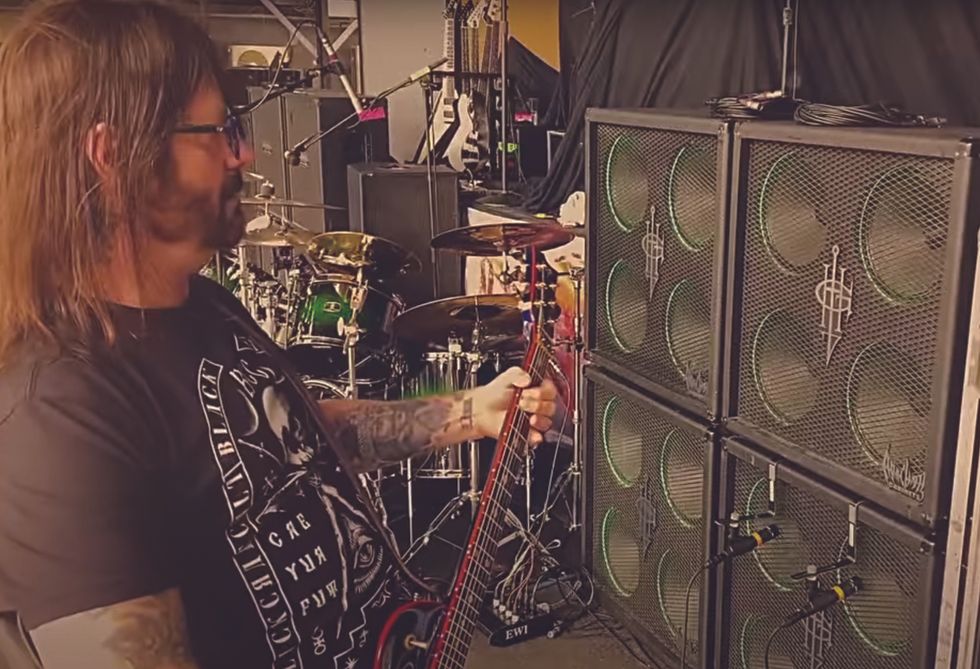
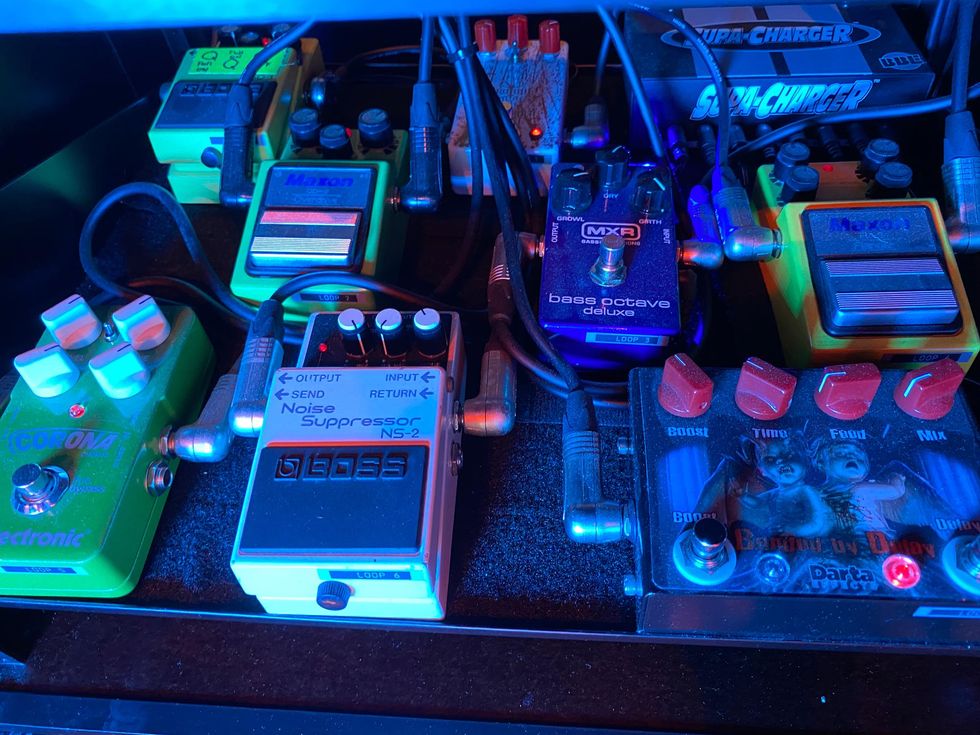
Thrash-metallurgist Gary Holt trusts most of his switching to his tech, Steve Brogdon, who triggers everything with a rack-mounted Voodoo Lab GCX Guitar Audio Switcher that coordinates with a Voodoo Lab Ground Control Pro MIDI Foot Controller. The pedals in Brogdon’s care include a Boss SD-1 Super Overdrive, Pro Tone Pedals Gary Holt Signature Mid Boost, Maxon OD-9, MXR Bass Octave Deluxe, Maxon FL-9 Flanger, TC Electronic Corona Chorus, Boss NS-2 Noise Suppressor, and a Darta Effects Bonded by Delay. A BBE Supa-Charger provides juice.
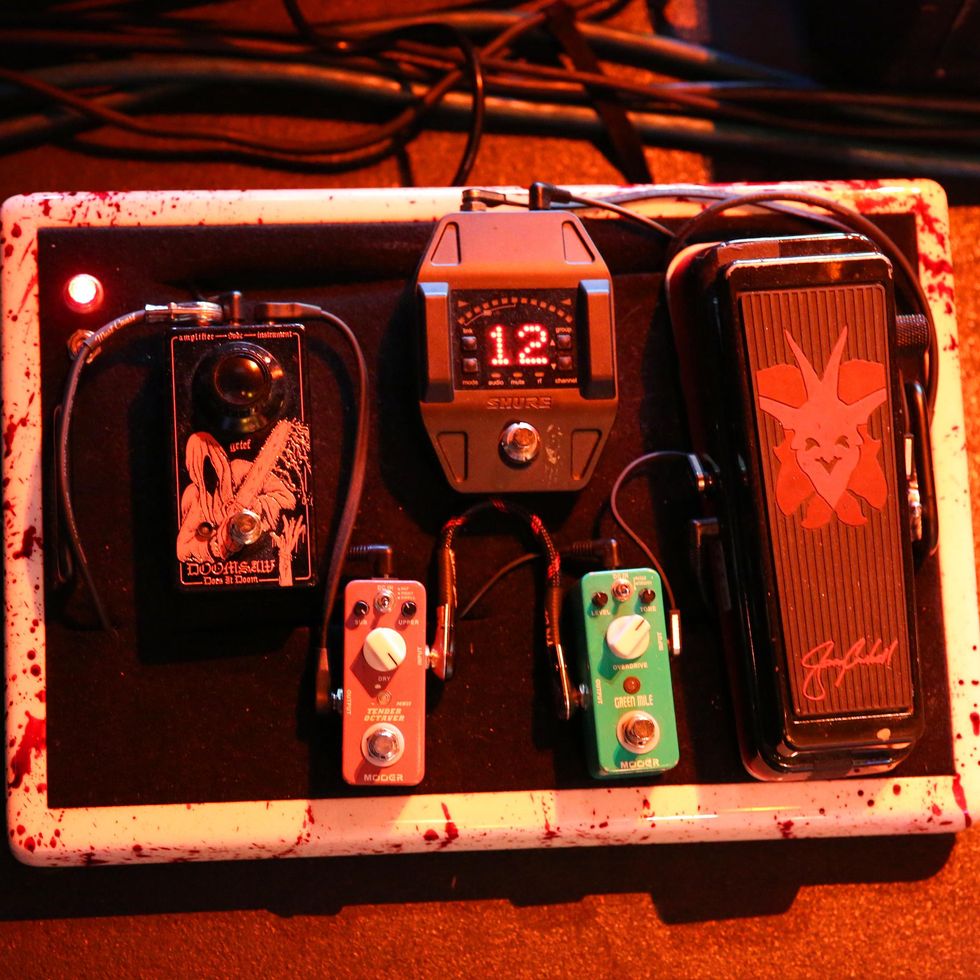
Holt still stomps these boxes himself: a Does It Doom Doomsaw, Mooer Tender Octaver, Mooer Green Mile, and a Dunlop JC95SE Jerry Cantrell Special Edition Crybaby Wah. A Shure GLXD16 Digital Wireless Guitar Pedal System lets him rock untethered.
Rig Rundown: Exodus' Gary Holt [2022]
Dinosaur Jr.’s J Mascis
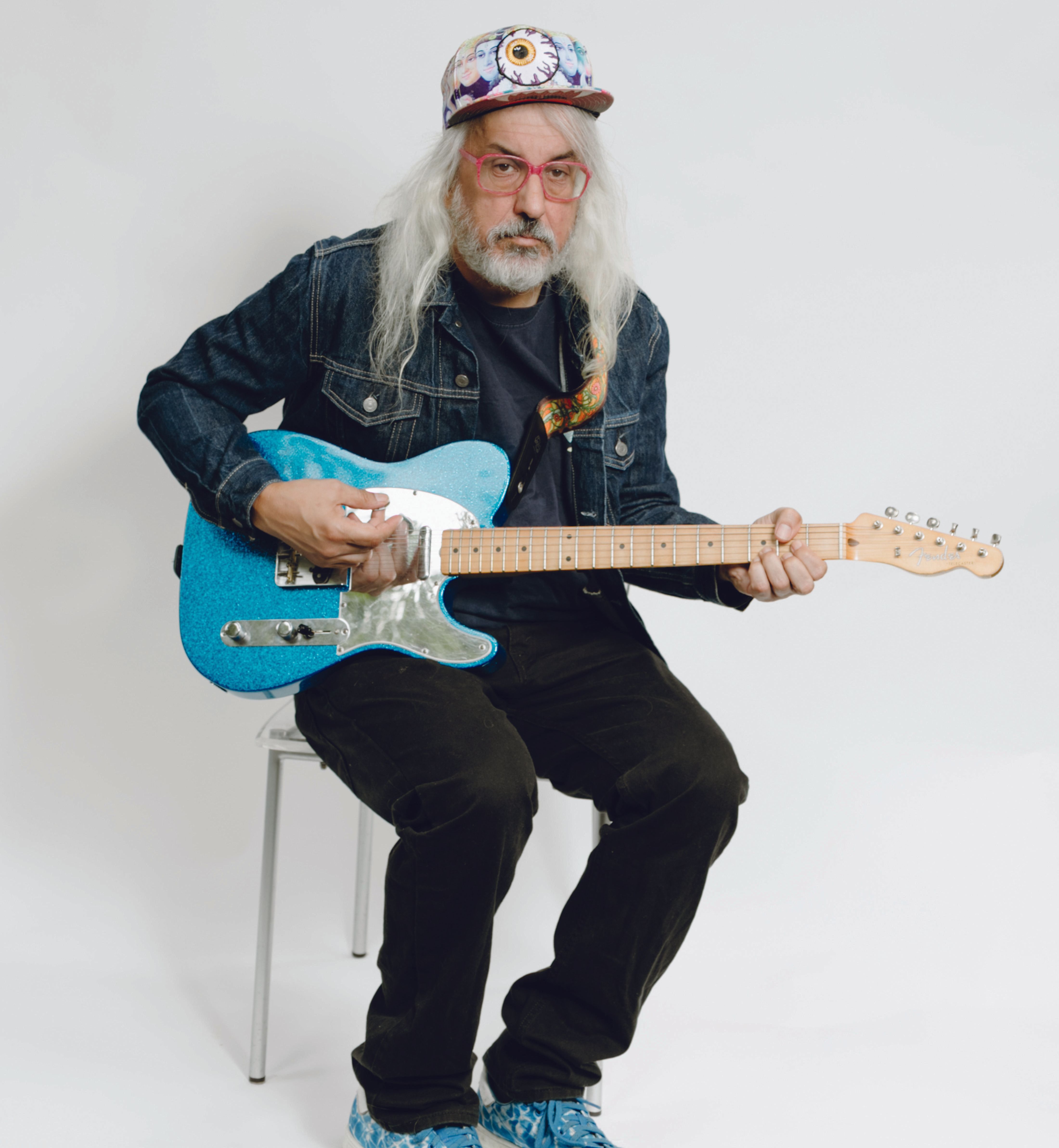
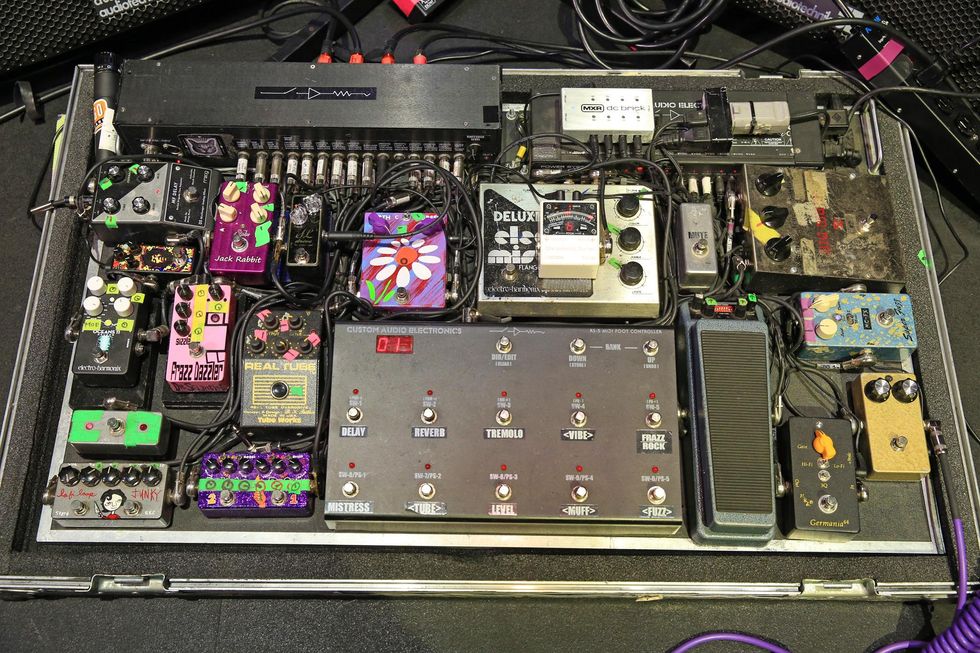
For at least 10-plus years, J Mascis has used a Bob Bradshaw-built Custom Audio Electronics switcher as his mission control. His longtime stomps include a Tone Bender MkI/Rangemaster-clone combo pedal made by Built to Spill’s Jim Roth (bottom right corner), Mascis’ first EHX Ram’s Head Big Muff Pi (top right), a vintage EHX Deluxe Electric Mistress, an MC-FX clone of a Univox Super Fuzz (lower right, blue box), a pair of ZVEX pedals—a Double Rock (two Box of Rock stomps in one) and a Lo-Fi Loop Junky (both bottom left), a Tube Works Real Tube Overdrive, a Moog Minifooger MF Delay, and a Boss TU-3S Tuner. His recently added pedals are a Homebrew Electronics Germania 44 Treble Booster (lower right), a JAM Pedals RetroVibe MkII, an Xotic SL Drive, a Suhr Jack Rabbit Tremolo, a Dr. Scientist Frazz Dazzler fuzz, an EHX Oceans 11, and a Dunlop Jimi Hendrix ’69 Psych Series Uni-Vibe Chorus/Vibrato. Everything receives juice from an MXR MC403 Power System or an MXR M237 DC Brick.
